

A Traveler's Guide to Dark Tourism
Exploring the world's dark & unusual travel destinations.

Spac Prison: Albania’s Dark Tourism Destination Reveals a Haunting History
Nestled within the picturesque mountains of Albania, SPAÇ Prison stands as a chilling reminder of the country’s tumultuous past. Once a site of political imprisonment and human suffering, this haunting location has become a dark tourism destination, attracting visitors prepared … Read More

Visiting Hartheim Castle Memorial Site (Austria)
As far as dark tourist destinations are concerned, there’s few more harrowing than Hartheim Castle. During WWII it was a Euthanasia Centre, a secret Nazi killing facility, and part of the Aktion T4 program. Here, German citizens tagged as mentally … Read More

Tsitsernakaberd Genocide Memorial & Museum (Yerevan)
For dark tourists in Yerevan, a trip to Tsitsernakaberd is a must. The Memorial and Armenian Genocide Museum provide a powerful insight into the country and its culture and of the darkest period in the nations’ relatively recent history. The … Read More

Visiting Cellular Jail, Port Blair – All You Need to Know
Cellular Jail in the Andaman Islands has a dark and significant history. During the many years of British rule, prisoners were forced into exile in this remote location. Known as the Kala Pani (Black Water in Hindi), Indian freedom fighters … Read More

Masada, Israel – 1st Century Fortress and Site of a Mass Jewish Suicide
“Masada shall not fall again.” The oath that soldiers take when inducted into the Israeli Defence Forces ends with this line. It is connected to a siege that took place almost 2000 years ago. The 1st-century fortress at Masada was … Read More

KGB Cells Museum – Tartu, Estonia
In the center of the Estonian city of Tartu stands an unassuming building that once held a dark secret. During the first Soviet occupation of the country between 1940 and 1954, the basement was home to the KGB. Operating covertly … Read More

North Brother Island – Abandoned Quarantine Facility in New York
North Brother Island, located on the East River between the Bronx and Riker’s Island in New York, is a place with a dark history. Not only is the island home to the worst loss of life in New York’s history … Read More

Ruddock, Louisiana – Entire Town Destroyed by Hurricane
At the turn of the 20th century, Ruddock in Louisiana was a bustling community, located on an isthmus between Lake Maurepas and Lake Pontchartrain, the town was connected by the railroads with a train coming through daily. At the height … Read More

Vorkuta – Russia’s Dying City Above the Arctic Circle
Just over 90 miles north of the Arctic Circle and 40 hours by train from Moscow, sits the once-bustling coal-mining city of Vorkuta, Russia. Built by gulag inmates during Stalin’s big purge in the 1930s, this desolate region on the … Read More

Fleury-devant-douaumont – A Village that Died for France
During World War One, Fleury-devant-douaumont became known as one of the villages that died for France. Caught in the midst of The Battle of Verdun, (one of the longest and fiercest artillery battles of the Great War), French and German … Read More

Reggane and In Ekker – French Nuclear Test Sites, Algeria
Reggane and In Ekker were once nuclear test sites in Algeria. It was here that the French experimented with their atomic arsenal in the 1960s. Thirteen underground nuclear detonations were carried out at the In Ekker site. The reckless nature … Read More

Kadykchan – Abandoned Soviet Mining Town
Kadykchan is located at the eastern extremity of Russia in the Kolyma region of Siberia, an area renowned for the harshness of the climate. This part of Siberia is known for something else too, the devastating brutality of its Gulags. … Read More

Inside Saint Elmo, Colorado’s Best Preserved Ghost Town
St. Elmo, is currently the best-preserved ghost town in Colorado. This former gold mining camp in Chaffee County lies in the heart of the Sawatch Range. The entire district was placed on the National Register of Historic Places in 1979, … Read More

A Trip to Tinian Island – WWII Relics in the Pacific
Despite its remote location in the Pacific, Tinian is slowly becoming more popular with tourists, especially dark ones that are interested in Pacific WWII History. There are a number of reasons why. Not only did the island become one of … Read More

The Ruins of Villa Epecuén, Argentina – A Resort Town Submerged
Villa Epecuén was once a bustling tourist town along the shore of Lago Epecuen. The salt lake, some 600 kilometers away from Buenos Aires was a popular holiday spot for many decades in the 20th century. People would flock from … Read More

Visiting Nauru – An Island From Boom To Bust
Nauru has had a troubled history, passed from one empire to the next. As one of the three big “phosphate rocks” of the Pacific, (Banaba in Kiribati and Makatea in French Polynesia being the other two), the island was a … Read More

The Buried Village of Te Wairoa – Dark Tourism in New Zealand
On June 10, 1889, New Zealand’s deadliest volcanic eruption devastated the surrounding landscape and killed over 120 people. The villagers around Mount Tarawera on the on North Island did not stand a chance as boiling mud and hot springs tore … Read More

Port Royal – Sunken Pirate City, Jamaica
Port Royal, Jamaica was once known as “the most wicked and sinful city in the world”. Founded in 1494 by the Spanish, the enclave positioned on the mouth of what is now called Kingston Harbour, was the center of shipping … Read More

Bunker Valentin, Bremen – Nazi U-Boat Facility
Bunker Valentin was the largest fortified U-boat facility in Germany during WWII. Built to produce submarines on a grand scale for the Nazi war effort, more than 10,000 forced laborers were used in the construction of this gigantic bunker, support … Read More

Chagan Nuclear Tests, Crater Lake & Ghost Town – Kazakhstan
During the Cold War, the Soviets couldn’t get enough of blowing up nuclear weapons in northeastern Kazakhstan. The tests were not always with the intent to one day nuke the USA, however. Conducted by the military under the banner of … Read More
Privacy Overview
Privacy Policy - Contact - Terms and Conditions
- Share full article
Advertisement
Supported by
Beaches? Cruises? ‘Dark’ Tourists Prefer the Gloomy and Macabre
Travelers who use their off time to visit places like the Chernobyl nuclear plant or current conflict zones say they no longer want a sanitized version of a troubled world.

By Maria Cramer
North Korea. East Timor. Nagorno-Karabakh, a mountainous enclave that for decades has been a tinderbox for ethnic conflict between Armenians and Azerbaijanis.
They’re not your typical top tourist destinations.
But don’t tell that to Erik Faarlund, the editor of a photography website from Norway, who has visited all three. His next “dream” trip is to tour San Fernando in the Philippines around Easter , when people volunteer to be nailed to a cross to commemorate the suffering of Jesus Christ, a practice discouraged by the Catholic Church.
Mr. Faarlund, whose wife prefers sunning on Mediterranean beaches, said he often travels alone.
“She wonders why on earth I want to go to these places, and I wonder why on earth she goes to the places she goes to,” he said.
Mr. Faarlund, 52, has visited places that fall under a category of travel known as dark tourism , an all-encompassing term that boils down to visiting places associated with death, tragedy and the macabre.
As travel opens up, most people are using their vacation time for the typical goals: to escape reality, relax and recharge. Not so dark tourists, who use their vacation time to plunge deeper into the bleak, even violent corners of the world.
They say going to abandoned nuclear plants or countries where genocides took place is a way to understand the harsh realities of current political turmoil, climate calamities, war and the growing threat of authoritarianism.
“When the whole world is on fire and flooded and no one can afford their energy bills, lying on a beach at a five-star resort feels embarrassing,” said Jodie Joyce, who handles contracts for a genome sequencing company in England and has visited Chernobyl and North Korea .
Mr. Faarlund, who does not see his travels as dark tourism, said he wants to visit places “that function totally differently from the way things are run at home.”
Whatever their motivations, Mr. Faarlund and Ms. Joyce are hardly alone.
Eighty-two percent of American travelers said they have visited at least one dark tourism destination in their lifetime, according to a study published in September by Passport-photo.online, which surveyed more than 900 people. More than half of those surveyed said they preferred visiting “active” or former war zones. About 30 percent said that once the war in Ukraine ends, they wanted to visit the Azovstal steel plant, where Ukrainian soldiers resisted Russian forces for months .
The growing popularity of dark tourism suggests more and more people are resisting vacations that promise escapism, choosing instead to witness firsthand the sites of suffering they have only read about, said Gareth Johnson, a founder of Young Pioneer Tours , which organized trips for Ms. Joyce and Mr. Faarlund.
Tourists, he said, are tired of “getting a sanitized version of the world.”
A pastime that goes back to Gladiator Days
The term “dark tourism” was coined in 1996, by two academics from Scotland, J. John Lennon and Malcolm Foley, who wrote “Dark Tourism: The Attraction to Death and Disaster.”
But people have used their leisure time to witness horror for hundreds of years, said Craig Wight, associate professor of tourism management at Edinburgh Napier University.
“It goes back to the gladiator battles” of ancient Rome, he said. “People coming to watch public hangings. You had tourists sitting comfortably in carriages watching the Battle of Waterloo.”
Professor Wight said the modern dark tourist usually goes to a site defined by tragedy to make a connection to the place, a feeling that is difficult to achieve by just reading about it.
By that definition, anyone can be a dark tourist. A tourist who takes a weekend trip to New York City may visit Ground Zero. Visitors to Boston may drive north to Salem to learn more about the persecution of people accused of witchcraft in the 17th century. Travelers to Germany or Poland might visit a concentration camp. They might have any number of motivations, from honoring victims of genocide to getting a better understanding of history. But in general, a dark tourist is someone who makes a habit of seeking out places that are either tragic, morbid or even dangerous, whether the destinations are local or as far away as Chernobyl.
In recent years, as tour operators have sprung up worldwide promising deep dives into places known for recent tragedy, media attention has followed and so have questions about the intentions of visitors, said Dorina-Maria Buda, a professor of tourism studies at Nottingham Trent University .
Stories of people gawking at neighborhoods in New Orleans destroyed by Hurricane Katrina or posing for selfies at Dachau led to disgust and outrage .
Were people driven to visit these sites out of a “sense of voyeurism or is it a sense of sharing in the pain and showing support?” Professor Buda said.
Most dark tourists are not voyeurs who pose for photos at Auschwitz, said Sian Staudinger, who runs the Austria-based Dark Tourist Trips , which organizes itineraries in the United Kingdom and other parts of Europe and instructs travelers to follow rules like “NO SELFIES!”
“Dark tourists in general ask meaningful questions,” Ms. Staudinger said. “They don’t talk too loud. They don’t laugh. They’re not taking photos at a concentration camp.”
‘Ethically murky territory’
David Farrier , a journalist from New Zealand, spent a year documenting travels to places like Aokigahara , the so-called suicide forest in Japan, the luxury prison Pablo Escobar built for himself in Colombia and McKamey Manor in Tennessee, a notorious haunted house tour where people sign up to be buried alive, submerged in cold water until they feel like they will drown and beaten.
The journey was turned into a show, “Dark Tourist,” that streamed on Netflix in 2018 and was derided by some critics as ghoulish and “sordid.”
Mr. Farrier, 39, said he often questioned the moral implications of his trips.
“It’s very ethically murky territory,” Mr. Farrier said.
But it felt worthwhile to “roll the cameras” on places and rituals that most people want to know about but will never experience, he said.
Visiting places where terrible events unfolded was humbling and helped him confront his fear of death.
He said he felt privileged to have visited most of the places he saw, except McKamey Manor.
“That was deranged,” Mr. Farrier said.
Professor Buda said dark tourists she has interviewed have described feelings of shock and fear at seeing armed soldiers on streets of countries where there is ongoing conflict or that are run by dictatorships.
“When you’re part of a society that is by and large stable and you’ve gotten into an established routine, travel to these places leads you to sort of feel alive,” she said.
But that travel can present real danger.
In 2015, Otto Warmbier , a 21-year-old student from Ohio who traveled with Young Pioneer Tours, was arrested in North Korea after he was accused of stealing a poster off a hotel wall. He was detained for 17 months and was comatose when he was released. He died in 2017, six days after he was brought back to the United States.
The North Korean government said Mr. Warmbier died of botulism but his family said his brain was damaged after he was tortured.
Americans can no longer travel to North Korea unless their passports are validated by the State Department.
A chance to reflect
Even ghost tours — the lighter side of dark tourism — can present dilemmas for tour operators, said Andrea Janes, the owner and founder of Boroughs of the Dead: Macabre New York City Walking Tours.
In 2021, she and her staff questioned whether to restart tours so soon after the pandemic in a city where refrigerated trucks serving as makeshift morgues sat in a marine terminal for months.
They reopened and were surprised when tours booked up fast. People were particularly eager to hear the ghost stories of Roosevelt Island, the site of a shuttered 19th-century hospital where smallpox patients were treated .
“We should have seen as historians that people would want to talk about death in a time of plague,” Ms. Janes said.
Kathy Biehl, who lives in Jefferson Township, N.J., and has gone on a dozen ghost tours with Ms. Janes’s company, recalled taking the tour “Ghosts of the Titanic” along the Hudson River. It was around 2017, when headlines were dominated by President Trump’s tough stance on refugees and immigrants coming into the United States.
Those stories seemed to dovetail with the 100-year-old tales of immigrants trying to make it to New York on a doomed ship, Ms. Biehl said.
It led to “a catharsis” for many on the tour, she said. “People were on the verge of tears over immigration.”
Part of the appeal of dark tourism is its ability to help people process what is happening “as the world gets darker and gloomier,” said Jeffrey S. Podoshen , a professor of marketing at Franklin and Marshall College, who specializes in dark tourism.
“People are trying to understand dark things, trying to understand things like the realities of death, dying and violence,” he said. “They look at this type of tourism as a way to prepare themselves.”
Mr. Faarlund, the photo editor, recalled one trip with his wife and twin sons: a private tour of Cambodia that included a visit to the Killing Fields , where between 1975 and 1979 more than 2 million Cambodians were killed or died of starvation and disease under the Khmer Rouge regime.
His boys, then 14, listened intently to unsparing and brutal stories of the torture center run by the Khmer Rouge. At one point, the boys had to go outside, where they sat quietly for a long time.
“They needed a break,” Mr. Faarlund said. “It was quite mature of them.”
Afterward, they met two of the survivors of the Khmer Rouge, fragile men in their 80s and 90s. The teenagers asked if they could hug them and the men obliged, Mr. Faarlund said.
It was a moving trip that also included visits to temples, among them Angkor Wat in Siem Reap, and meals of frog, oysters and squid at a roadside restaurant.
“They loved it,” Mr. Faarlund said of his family.
Still, he can’t see them coming with him to see people re-enact the crucifixion in the Philippines.
“I don’t think they want to go with me on that one,” Mr. Faarlund said.

52 Places for a Changed World
The 2022 list highlights places around the globe where travelers can be part of the solution.
Follow New York Times Travel on Instagram , Twitter and Facebook . And sign up for our weekly Travel Dispatch newsletter to receive expert tips on traveling smarter and inspiration for your next vacation. Dreaming up a future getaway or just armchair traveling? Check out our 52 Places for a Changed World for 2022.
Maria Cramer is a reporter on the Travel desk. Please send her tips, questions and complaints about traveling, especially on cruises. More about Maria Cramer
Open Up Your World
Considering a trip, or just some armchair traveling here are some ideas..
52 Places: Why do we travel? For food, culture, adventure, natural beauty? Our 2024 list has all those elements, and more .
Mumbai: Spend 36 hours in this fast-changing Indian city by exploring ancient caves, catching a concert in a former textile mill and feasting on mangoes.
Kyoto: The Japanese city’s dry gardens offer spots for quiet contemplation in an increasingly overtouristed destination.
Iceland: The country markets itself as a destination to see the northern lights. But they can be elusive, as one writer recently found .
Texas: Canoeing the Rio Grande near Big Bend National Park can be magical. But as the river dries, it’s getting harder to find where a boat will actually float .
What is dark tourism?
Travelers' fascination with the macabre is not new
- Newsletter sign up Newsletter
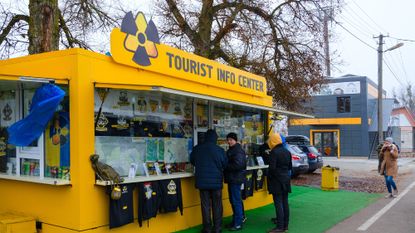
If you've ever wanted to visit — or actually visited — locations where disasters or tragedies occurred, you're not alone. This style of travel even has its own name: dark tourism. While dark tourism isn't new, it has become more conspicuous, especially as its uptick dovetailed with the debut of Netflix's "Dark Tourist" a few years ago. Climate-related disasters and political unrest are also creating more sites of tragedy, some of which are being used for economic gain. As such, travel to these troubled locations has raised ethical questions. Some believe this kind of tourism is inherently disrespectful; others support dark tourism, claiming it provides funds for rebuilding and aid.
Dark tourism refers to visiting places where "some of the darkest events of human history have unfolded," which can include "genocide, assassination, incarceration, ethnic cleansing, war or disaster — either natural or accidental," The Washington Post reported. Some popular examples of dark tourism are Chernobyl, the 9/11 memorial and the concentration camp Auschwitz. J. John Lennon, a professor of tourism at Glasgow Caledonian University, who coined the term "dark tourism" with a colleague in 1996, told the Post that dark tourism is not a new phenomenon and "there's evidence that dark tourism goes back to the Battle of Waterloo where people watched from their carriages the battle taking place."
Dark tourism has become popular because "when you're part of a society that is by and large stable and you've gotten into an established routine, travel to these places leads you to sort of feel alive," Dorina-Maria Buda, a professor of tourism studies at Nottingham Trent University, told The New York Times . Travelers have been drawn to these gloomy locales more in recent years, and as the effects of climate change accelerate and global conflicts like those in Ukraine and Israel unfold, there are an increasing number of such locations to visit. "There is an inherent fascination with ruination," Philip Stone, who runs the Institute for Dark Tourism Research, told CNN .
Subscribe to The Week
Escape your echo chamber. Get the facts behind the news, plus analysis from multiple perspectives.

Sign up for The Week's Free Newsletters
From our morning news briefing to a weekly Good News Newsletter, get the best of The Week delivered directly to your inbox.
What exactly are the ethics of dark tourism?
"It's very ethically murky territory," New Zealand journalist David Farrier, told the Times about dark tourism. Gawking at a location where disaster happened can be disrespectful. For example, World Crunch reported, a Ukraine travel agency faced controversy after offering tours to the scene of large-scale civilian massacres resulting from Russia's attacks on Ukraine. Many claimed it was "too soon" for tourism to the region, given that destruction is ongoing. "Bad conduct by tourists at sensitive sites — smiling selfies at concentration camps, for example — has been widely shunned on social media," said The Washington Post , adding that "the ethically questionable 'voyeurism' of visiting an ongoing or very recent tragedy to gape" is also largely considered taboo.
Still, there can be a lot to learn from visiting dark-tourism sites. Climate change is causing more natural disasters and destruction, and "the visual impact of climate change-induced landscapes serves as a warning of our industrialization," said Stone. "Visiting such places now can shine a critical light on the effects of climate change." A considered visit can also help provide fiscal resources to affected areas, like the Spanish island of La Palma which experienced a volcanic eruption in 2021 and Morocco which suffered a powerful earthquake in September. However, some locations, like Lahaina, Hawaii , which was nearly razed by devastating wildfires over the summer, have discouraged tourism to allow locals to recover and mourn the losses of their loved ones.
Many popular dark-tourism locations are sites with extensive, complicated histories. And thoughtful visitors often leave with newfound knowledge. "I think they're important places for us to reflect on and try to better understand the evil that we're capable of," remarked Lennon of Glasgow Caledonian University. According to Dark-tourism.com , a website dedicated to the phenomenon, there is indeed an optimal way to participate in dark tourism. "What is endorsed here is respectful and enlightened touristic engagement with contemporary history and its dark sites/sides in a sober, educational and non-sensationalist manner."
Sign up for Today's Best Articles in your inbox
A free daily email with the biggest news stories of the day – and the best features from TheWeek.com
Devika Rao has worked as a staff writer at The Week since 2022, covering science, the environment, climate and business. She previously worked as a policy associate for a nonprofit organization advocating for environmental action from a business perspective.

Under The Radar Expert says bugs will develop 'hypersexualisation' despite their genitals falling off
By Chas Newkey-Burden, The Week UK Published 25 April 24

Instant Opinion Opinion, comment and editorials of the day
By Harold Maass, The Week US Published 24 April 24

Today's Big Question Protests at Columbia University, other institutions, pit free speech against student safety
By Joel Mathis, The Week US Published 24 April 24
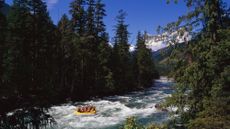
The Week Recommends Have a rip-roaring time on the water
By Catherine Garcia, The Week US Published 18 April 24

The Week Recommends Peru's most famous trail leads to Machu Picchu
By Catherine Garcia, The Week US Published 17 April 24

The Week Recommends The southwestern region pretty much has it all, from beachfront, to port metropolis, to verdant mountainside
By Scott Hocker, The Week US Published 15 April 24

The Explainer Sharpe reshapes words and concepts to better know Blackness and the United States
By Scott Hocker, The Week US Published 11 April 24

The Week Recommends Stay at a zoo in Sydney, or meet vortex hunters in Sedona
By Catherine Garcia, The Week US Published 8 April 24

The Explainer Now iconic, the style of art characterised by airy colors and undefined brushstrokes was criticised in its early days
By The Week UK Published 6 April 24

The Week Recommends The family that vacations together, stays together
By Catherine Garcia, The Week US Published 28 March 24

The explainer People are losing the sublime art of hanging out
By Devika Rao, The Week US Published 26 March 24
- Contact Future's experts
- Terms and Conditions
- Privacy Policy
- Cookie Policy
- Advertise With Us
The Week is part of Future plc, an international media group and leading digital publisher. Visit our corporate site . © Future US, Inc. Full 7th Floor, 130 West 42nd Street, New York, NY 10036.

17 Must-Visit Dark Tourism Destinations Around the World
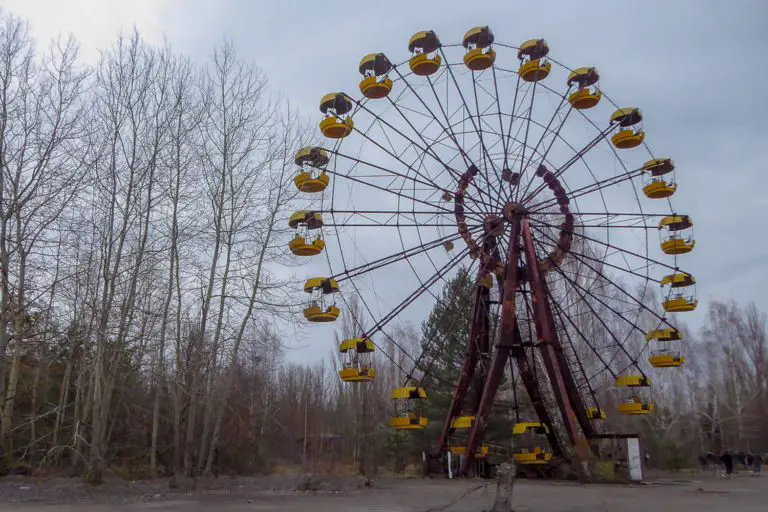
Dark Tourism destinations were once the remit of a select group of travellers. However, after the launch of popular Netflix show Dark Tourist, these attractions have hit the mainstream.
If you’re interested in the morbid and the macabre, look no further. After making several visits to dark history sites myself, I’ve teamed up with other travellers to bring you this list of dark tourism destinations all around the world.
Read more: (opens in new tab)
- What is Dark Tourism?
- Are Bolivia’s Mine Tours Ethical?
- Chernobyl Exclusion Zone Photographic Guide
17 Must-Visit Dark Tourism Destinations
1. chernobyl exclusion zone – kyiv, ukraine.
The abandoned amusement park in Pripyat is one of dark tourism’s crowning images. The haunting stills of the fairground that never heard the laughs of children hang in modern consciousness, a symbol of tragic loss and a warning of the mistakes men can make.
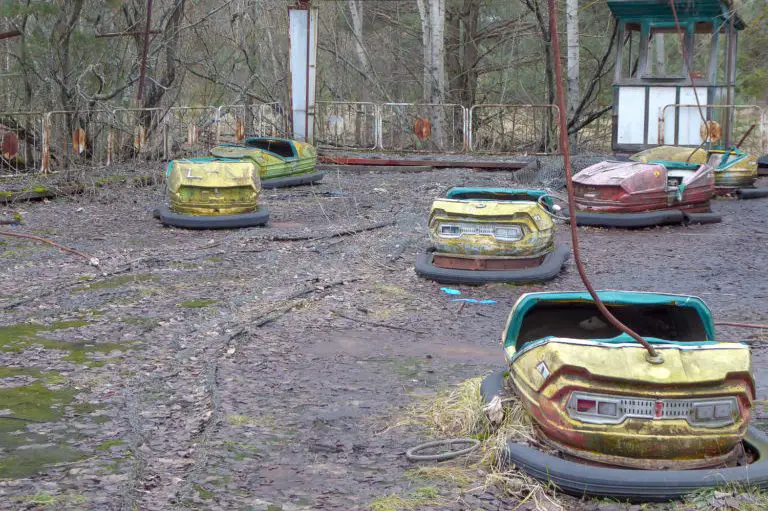
In 1986, the nuclear reactor at the Chernobyl power plant exploded, causing the worst nuclear accident in the world’s history. The effects were huge; people were forced to evacuate their homes and the surrounding areas became a hotbed of radiation. It was predicted that never again in our lifetime, would Chernobyl be inhabited by anything living.
Surprisingly, the Chernobyl exclusion zone has recovered quicker than was ever predicted. Although there are still risks with spending long periods in the exclusion zone, wild animals have returned and are thriving. Despite its recovery, Chernobyl acts as a very sobering reminder of the damage humanity can do without intention.
2. Sucre Cemetery – Sucre, Bolivia
Sucre Cemetery is an unlikely attraction in Bolivia’s capital. Regularly appearing on tourist maps, it is a peaceful place which attracts visitors who come to see how the Bolivians handle death and all that comes after.
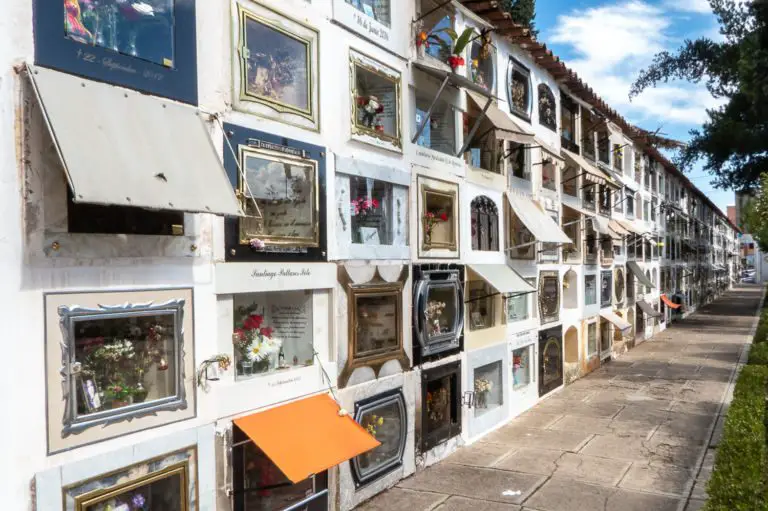
Also frequently visited by locals, this cemetery is a surprisingly popular spot for catching up with friends, studying and paying homage to the dearly departed.
Unlike other cemeteries I’d visited, these graves were arranged in a block system above ground. The vast majority of these were carefully maintained and were regularly stocked with gifts for departed loved ones. Small bottles of spirits were a common appearance, alongside slices of cake!
In Bolivia, death is accepted as an inevitability of life. While graveyards ultimately provide a space for burial, they hold a far more important symbolic role in Bolivian culture. Although death is traditionally seen as a dividing force, Sucre Cemetery demonstrates that death can continue to unite us all, long after somebody is gone.
3. The Poison Garden – Alnwick, England
Home to around 100 toxic and narcotic plants, the Poison Garden is undoubtedly one of the best things to do in Alnwick . This small but deadly garden is home to some of the world’s most dangerous plants and visitors are only allowed to enter on a guided tour.
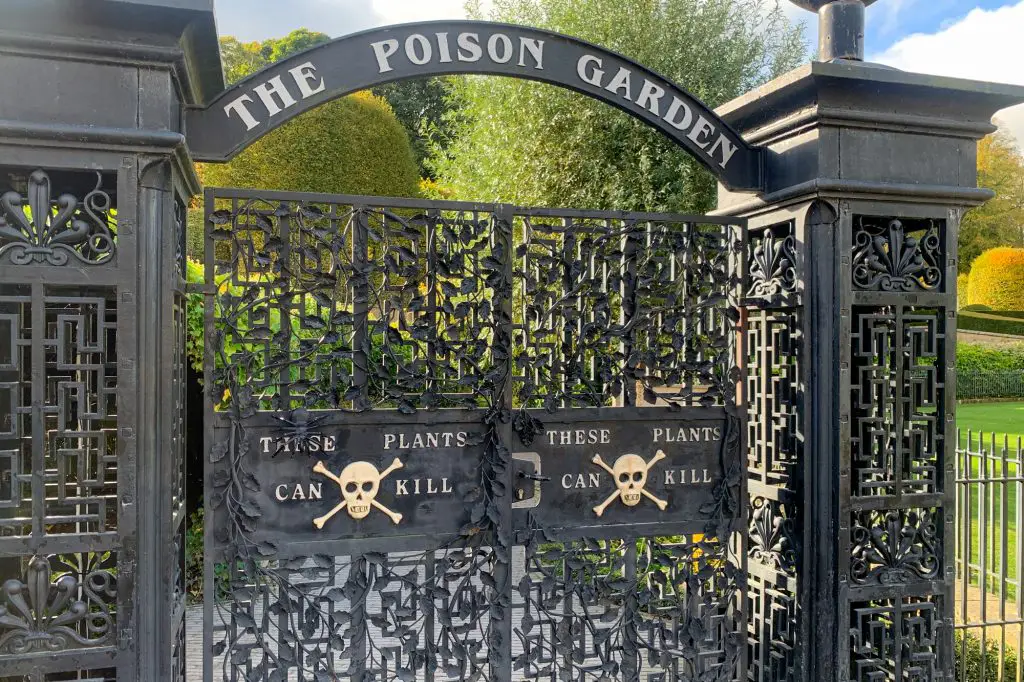
Deadly nightshade, cannabis and coca (the plant from which cocaine is derived) are a few examples of the plants housed in the Poison Garden. Visitors are prohibited from touching any of the greenery and there have even been cases of people passing out after smelling the plants!
The tour guides at the Poison Garden are great at explaining the real-life application of the plants using case studies such as Harold Shipman (Doctor Death) and Graham Young (The Teacup Poisoner). The garden also runs tours for local school children, educating them about drug use.
4. Paneriai Massacre Site – Vilnius, Lithuania
Paneriai is one of Vilnius’ many neighbourhoods. However, it will be forever remembered as the Ponary massacre site. The Einsatzgruppen (Nazi death squads) rounded up groups of Jews from the Vilna Ghetto, took them to Paneriai, executed them and forced other Jewish prisoners to dig mass graves and bury them.
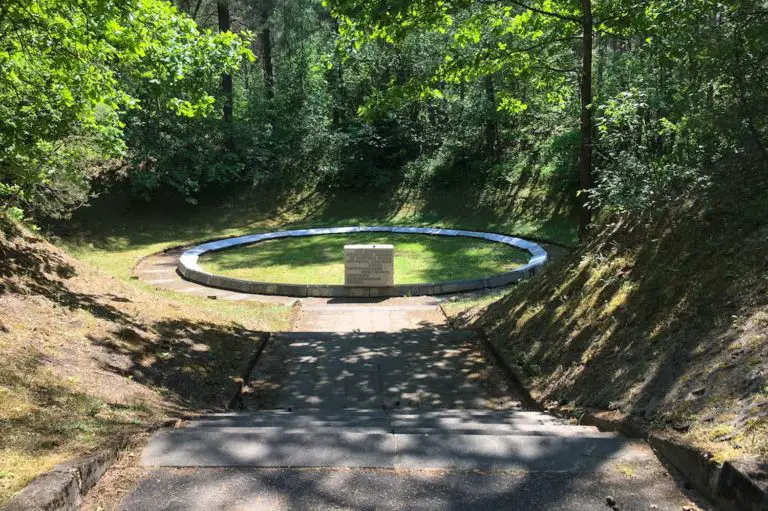
There are six burial sites within the complex, each the site of multiple mass executions. Because so many sets of bodies are stacked on each other, it is impossible to know the exact number of deaths. It is estimated to be around 100,000.
Those brought to Paneriai were burned to death in an attempt to destroy evidence. They were then shovelled into the pits, which today are marked by memorials. Like many of the massacre sites in the Baltics, Paneriai is a forested area. This makes walking around a surreal experience as it is quiet, peaceful and beautiful, a stark contrast to the memorials reminding you that thousands of people were slaughtered there.
Contributed by Cultura Obscura . Follow them on Facebook !
5. St. Nicholas’ Church – Hamburg, Germany
In July 1943, Hamburg was the target of an allied aerial World War Two bombing. The tall spire of St. Nicholas’ Church was used as an orientation marker and the building was almost completely destroyed. All that remained were some external walls, the crypt and most of the tower.
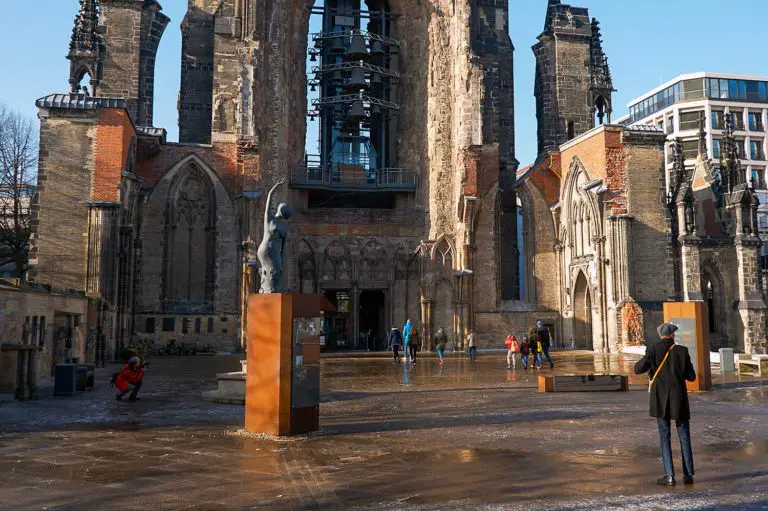
Today, St. Nicholas’ Church stands as a memorial to the victims of WWII. The memorial exhibits in the crypt provide many details of the events leading up to Operation Gomorrah , the air war over Europe. Beautiful sculptures sit inside, illustrating the futility of war and its disastrous consequences. A 51-bell carillon has been installed in the tower and sounds every Thursday at noon.
We visited the church on a walking tour of Hamburg and the experience still haunts me. The vast majority of people in Hamburg during Operation Gomorrah would have been perfectly ordinary citizens going about their daily lives – people just like me.
Contributed by Lesley of Freedom 56 Travel . Follow her on Twitter !
6. Comuna 13 – Medellin, Colombia
Medellin was once the most dangerous city in the world. When infamous drug lord Pablo Escobar controlled the city, crime was extremely high and the locals lived in fear. The neighbourhood of Comuna 13 had direct access to the main highway, making the exportation of drugs, weapons and other illegal goods extremely easy.
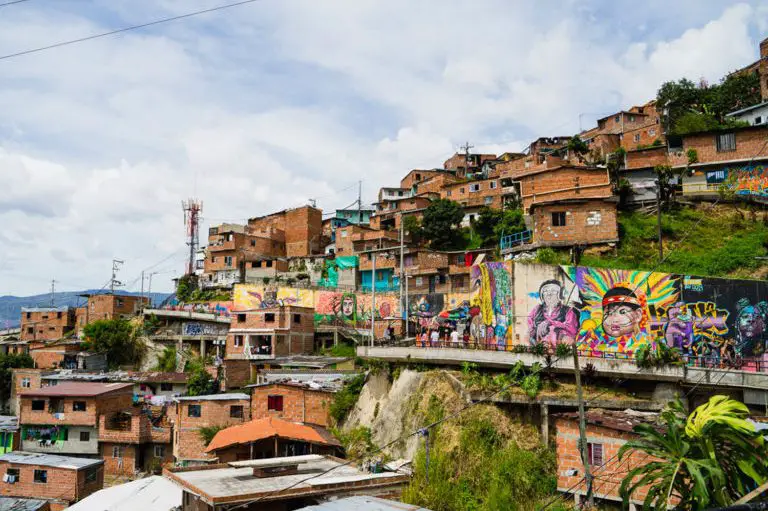
Drug cartels fought over control of the area and as a result, Comuna 13 was a very dangerous place. It was not uncommon to hear gunshots throughout the day and even to see dead bodies piled on the street. With that in mind, it might come as a surprise that Comuna 13 is now one of the most visited neighbourhoods in Medellin.
Over recent years, a tremendous amount of money has been invested in Comuna 13. A cable car system was installed to link it to the city centre. The resulting increase in tourism has sparked real change for the locals and the neighbourhood has become one of the country’s leading creative hubs.
Contributed by LivingOutLau . Follow him on Instagram !
7. Gulag Labour Camps – Karaganda, Kazakhstan
My trip to Kazakhstan left a deep impression on me. While I had heard about the so-called gulags, I did not know that most of them were in Kazakhstan. Stalin deported whole ethnic groups to the remotest corners of the country. This is how during WWII, the Volga Germans ended up in Karaganda .
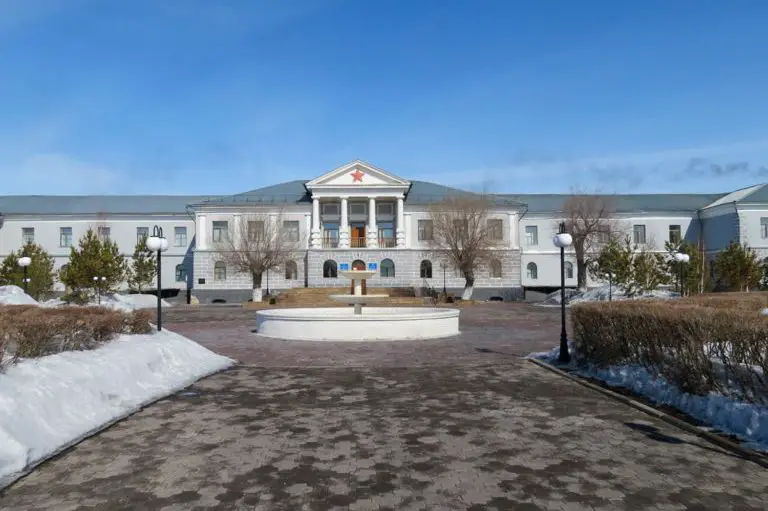
Stalin wanted to develop the farms and coal mines in Karaganda and set up a network of labour camps to support these projects. Political prisoners and deportees provided the free labour that was necessary.
Even though not much of the labour camps remain, Karaganda is the perfect example of a dark tourist site. There is an excellent Gulag Museum in the former headquarters of the labour camp in Dolinka.
Also nearby, the Ecological Museum covers other dark parts of Soviet history. The museum has an exhibition on the nuclear tests done in Kazakhstan and the debris that falls from the sky from the space program in Baikonur.
Contributed by Ellis of Backpack Adventures. Follow her on Instagram !
8. The Eruption of Mount Vesuvius – Pompeii, Italy
Pompeii was a thriving coastal city in Italy that was completely destroyed in 79AD when the neighbouring Mount Vesuvius erupted and covered the city in ash. It is a prime example of what is termed disaster tourism, where tourists visit a location where an environmental disaster has occurred.
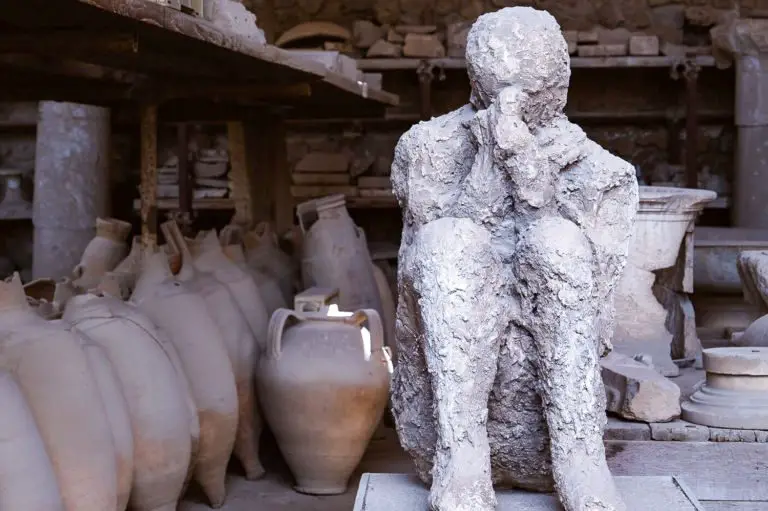
What makes the eruption of Mount Vesuvius more tragic was that the majority of people who died were slaves, who either had no means of escaping or were trapped. When archaeologists began excavating the site, they found several bodies. The ash preserved these bodies which allowed historians to create the human casts we see on site today.
Seeing these casts in crouching positions while covering their faces, gave me shivers. To get a greater understanding of the site and everything inside of it, I highly suggest finding a good tour guide. This photographic travel guide to Pompeii gives lots more tips for planning a visit.
Contributed by Natasha of And Then I Met Yoko. Follow Natasha on Instagram !
9. Mary King’s Close – Edinburgh, United Kingdom
Below the Royal Mile in Edinburgh hides an underground street paved with dark history. Mary King’s Close was alive with residents when the bubonic plague seized the country in 1645. The grievous epidemic turned the once-thriving close into a dreadful place, where its inhabitants suffered a slow and torturous death.
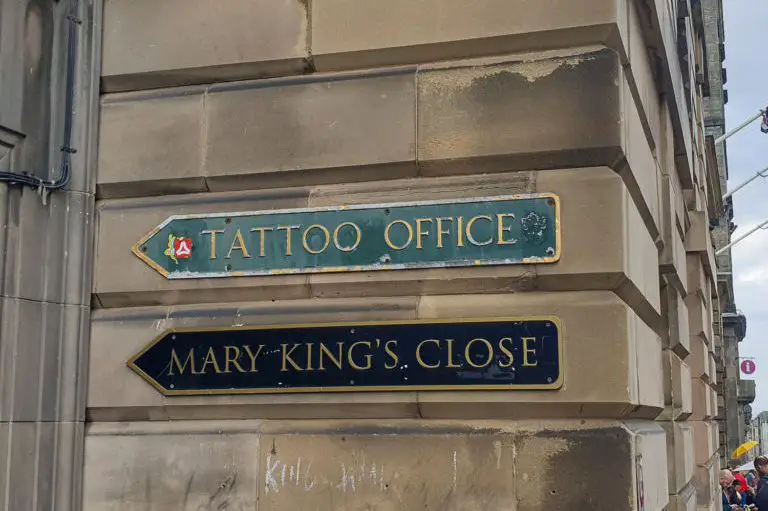
Mary King’s Close was sealed off and used as a foundation for the Royal Exchange in the late 1700s. Years passed and its terrible secrets were left trapped within its dark walls. In the 1990s, the close was rediscovered and opened to the public, allowing people to explore the subterranean streets that once festered with disease.
The mental image of the street once bustling with life left a lump in my throat – the locals had no idea how many would lose their lives to the Great Plague. Like Mary King’s Close, the entire city of Edinburgh is filled with dark and spooky places so be sure to check out Scotland’s capital if you’re a fan of the macabre.
Contributed by Wandering Crystal. Follow her on Instagram !
10. The Killing Fields and S-21 – Phnom Penh, Cambodia
During the Khmer Rouge genocide in Cambodia, execution, starvation and disease were allowed to flourish, killing an estimated three million people. Led by Pol Pot, the regime attempted to enforce brutal and inhumane policies to push Cambodia into being a classless society.
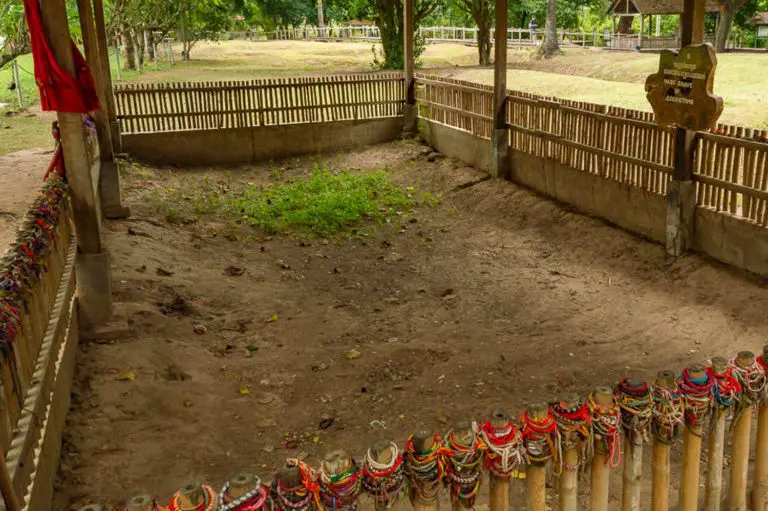
Phnom Penh and the surrounding area are home to S-21, a political prison used by the regime, and Choeung Ek, the largest of the Killing Fields. Over 12,000 prisoners were held at S-21 during the regime and with only seven known survivors, it’s a place known for unthinkable torture and suffering. The S-21 site now houses the Tuol Sleng Genocide Museum where you can learn more about the Cambodian massacre.
Much like S-21, a tour of the Cambodian Killing Fields can be hard to digest. There is a memorial stupa filled with the skulls of victims and you can still see bone fragments and strips of clothing along the paths. It’s a horrifying place but important to visit to ensure history doesn’t repeat itself.
Contributed by Ben at Horizon Unknown . Follow him on Facebook !
11. Abandoned Ghost Palace – Bali, Indonesia
Located near the village of Bedugul lies an abandoned hotel. Legend has it that in the early 1990s, the hotel began to be constructed by Tommy Suharto, the youngest son of the former Indonesian President. Tommy was later convicted of ordering the assassination of a judge who previously found him guilty of corruption and he subsequently went to prison. The hotel was never completed.
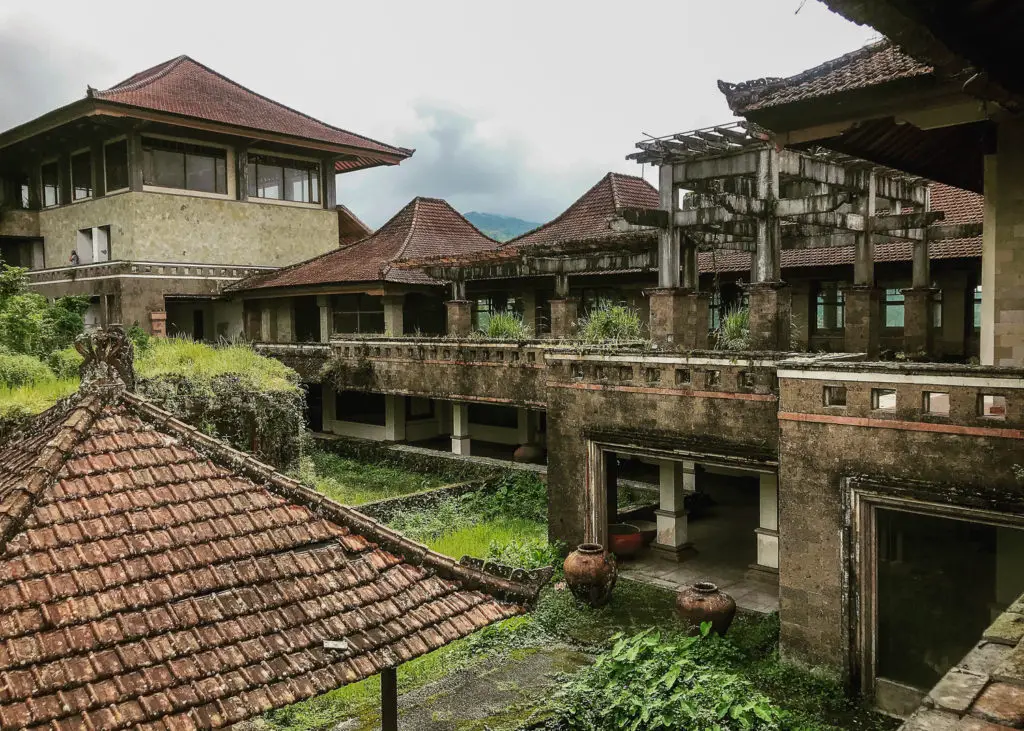
Another theory is that the hotel is haunted by the landlocked souls of labourers who were worked to death during its construction. The hotel, originally named Hotel Pondok Indah Bedugul, isn’t open for visitors but if you hand the guard 10,000 IDR, he’ll let you in to explore. I recommend seeing it as soon as possible because rumours indicate that visitors will no longer be permitted entrance (even with a bribe) because of how dangerous it is.
Contributed by Nat Wanderlust.
12. Auschwitz-Birkenau – Oświęcim, Poland
The “Final Solution to the Jewish Question” was the official code name for the murder of Jews during World War II. At least 1.3 million people were sent to Auschwitz by the Nazis and a shocking 1.1 million people were murdered by the SS, mainly in gas chambers.
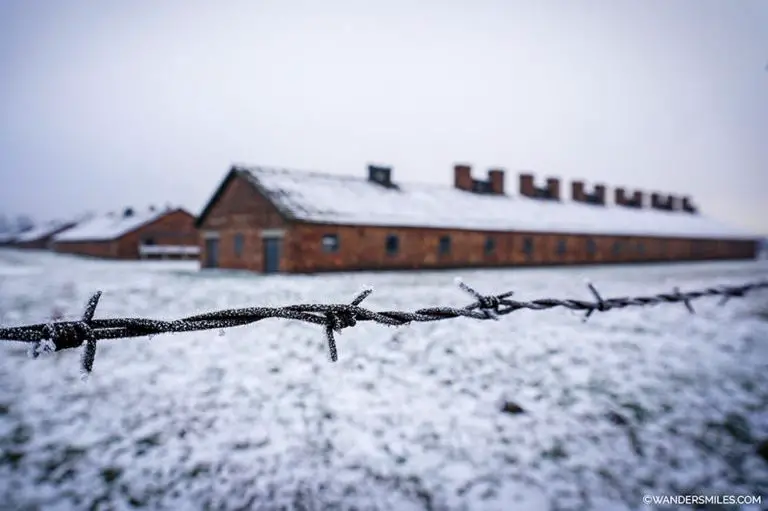
Auschwitz-Birkenau is located on two different sites. Auschwitz I comprises brick buildings and the Death Block where people were gassed. Auschwitz II, known as Birkenau, was opened as they could not cope with the scale of death at Auschwitz I.
On arrival, you’ll see the famous train tracks where people were transported in and either sent to the gas chambers or given labour duty. Once the latter were emaciated, they were gassed and replaced with new prisoners.
I cried in horror seeing the piles of shoes, suitcases and false legs that once belonged to people. Human hair was used to make felt for socks given to the forces in submarines – 293 sacks of hair were found on liberation. Words cannot describe the emotions you’ll have upon seeing this symbol of this horrific dark chapter in our history.
Contributed by Vanessa from Wanders Miles, follow her on Instagram !
13. Day of the Dead – Oaxaca, Mexico
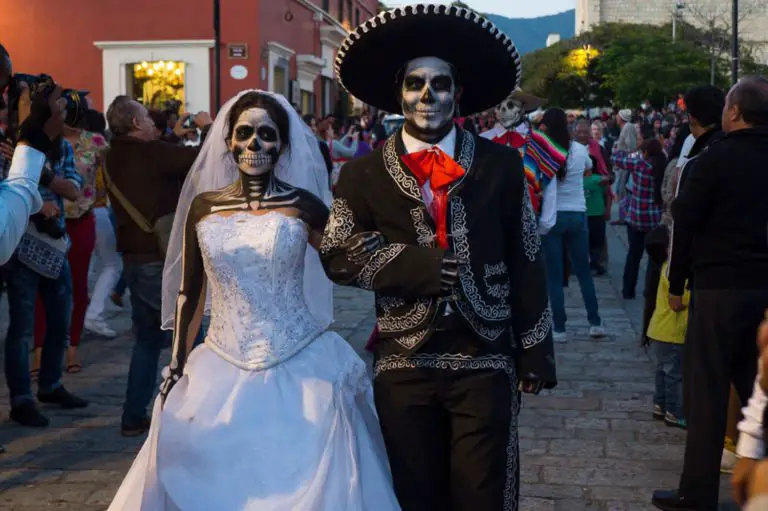
The Mexican Day of the Dead festival is a darkly uplifting event that occurs each year between October 31st and November 2nd. On these days, family and friends celebrate the lives of loved ones passed. It is widely believed that for three days each year, the veil between this world and the next is especially thin.
During the Day of the Dead festival, the spirits of the departed return to provide counsel to their living family members and friends. Much of the reunion is celebrated within the cemetery, where graves are cleaned and decorated for the occasion. On certain dates, families spend the whole night in the cemetery eating sugar skull sweets, drinking alcohol and playing music.
UNESCO recognises ‘Dia de Los Muertos’ as being ‘ Intangible Cultural Heritage of Humanity ’. Experiencing the Day of the Dead is a once-in-a-lifetime opportunity; especially in Oaxaca where visiting graves is commonplace. Prepare for everything you have ever thought about death to be challenged.
Contributed by Castaway With Crystal. Follow her on Instagram!
14. Red Terror Martyrs’ Museum – Addis Ababa, Ethiopia
The military junta who took power after Ethiopia’s Emperor Haile Selassie was ousted were known as the Derg. After prolonged internal wranglings, Mengistu, a soldier from the ranks, emerged as their leader and the dictator of Ethiopia.
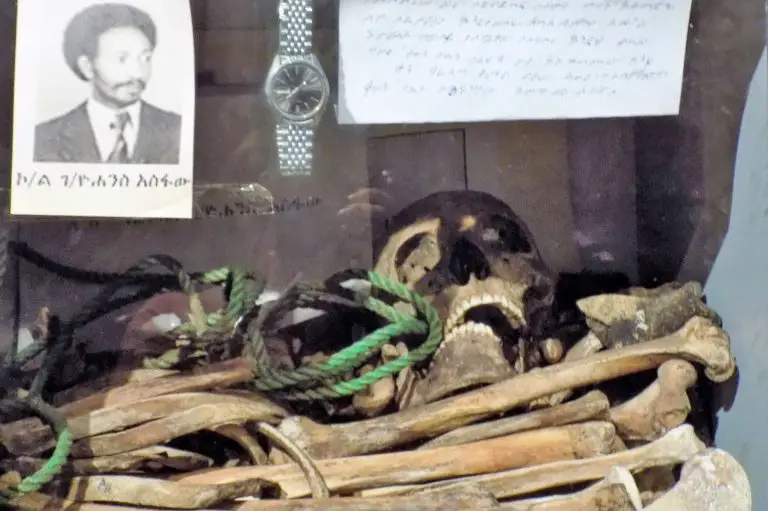
Within a couple of years, the Derg had created terror among ordinary Ethiopians, tens of thousands of whom had been imprisoned without trial and tortured, or worse, executed. The term ‘Red Terror’ comes from Mengistu’s famous speech when he smashed a bottle of blood to illustrate the killings to come. His regime is estimated to be responsible for the deaths of between 1.2 and 2 million Ethiopians.
Today, the horrors of Mengistu’s regime are remembered in the Red Terror Martyrs’ Museum in Addis Ababa . Opened in 2010, this small museum teaches about the atrocities of the regime. Photos of victims cover the walls alongside displays of human remains recovered from mass graves. We came away from the Martyrs’ Museum appalled by man’s inhumanity to man.
Contributed by Andrea of Happy Days Travel Blog. Follow her on Facebook !
15. Constitution Hill – Johannesburg, South Africa
Constitution Hill is now a living museum which tells the story of South Africa’s journey to democracy. It’s hard to comprehend that people like Nelson Mandela and Mahatma Gandhi served time here in the 1960s and that the prison was still operational until 1982.
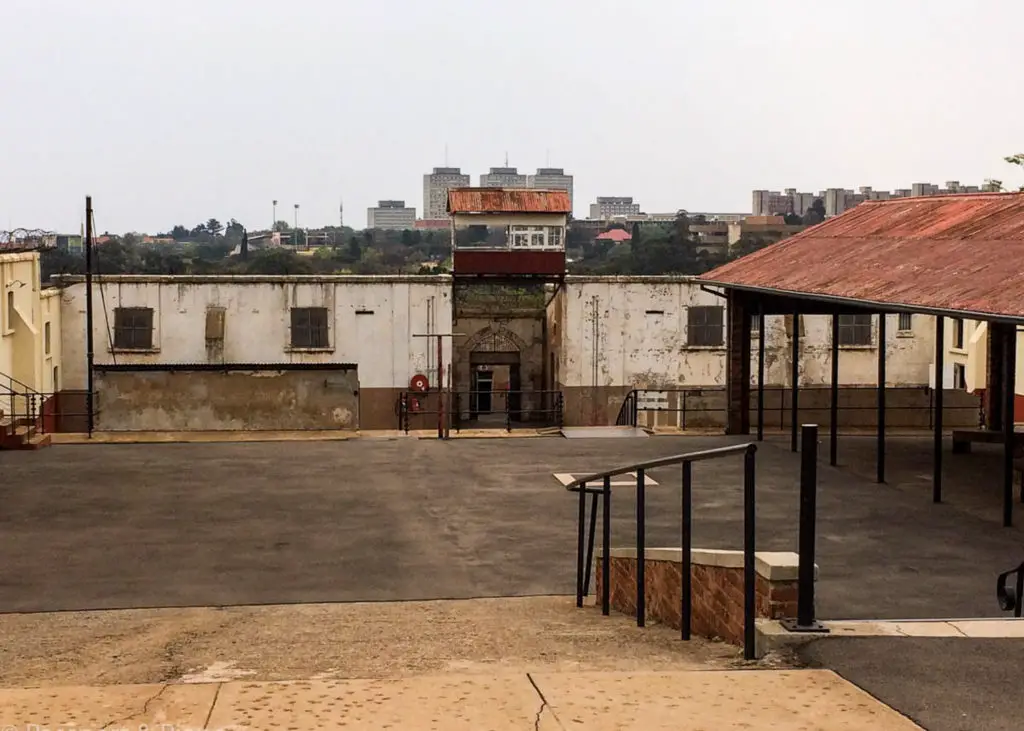
There are several sites that you can visit at Constitution Hill. The Old Fort is where white male prisoners were housed. Although the cells were overcrowded and unhygienic, the rooms are larger than those of the black prisoners. They were held in Block number 4. There was very little daylight and as I stepped inside, I was terrified that someone would shut the cell door behind me.
There’s also the Awaiting Trial Block. The block was demolished and the bricks were used to build South Africa’s new Constitutional Court. Thankfully this court serves to uphold the rights of all South Africans, regardless of colour, but the bricks are a poignant reminder of its troubled past.
Contributed by Fiona of Passport and Piano . Follow her on Facebook !
16. Shanghai Tunnels – Portland, USA
In a city known for the slogan ‘ Keep Portland Weird ,’ the Shanghai Tunnels fit right in. It’s believed that from 1850 until 1941, men in Portland, Oregon, were regularly kidnapped and sold to ship captains as labourers. During this period, there was a shortage of labour available for the city’s booming shipping industry and this created a black market.
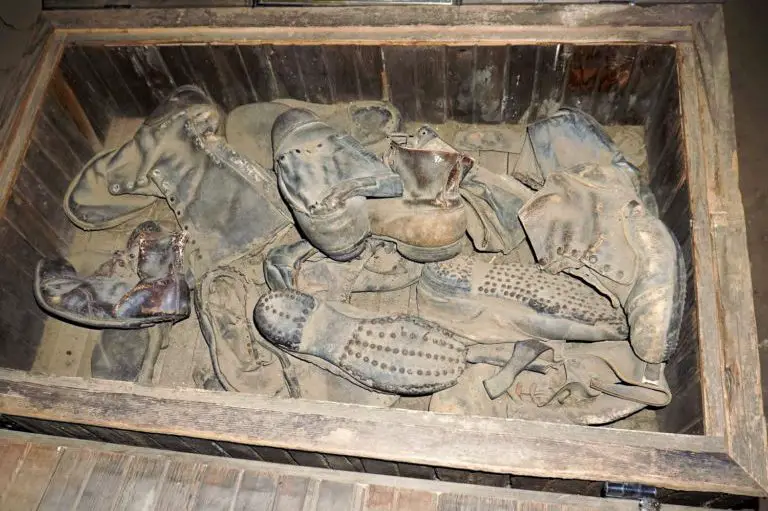
To capture these men, underground tunnels originally built to move inventory between businesses were repurposed for illicit use. Trapdoors were even installed in some of the local bars so that drunk men would drop into the tunnel below.
Today, tours of these tunnels are offered daily by a non-profit organisation, Shanghai Tunnels/Portland Underground. All tour participants are advised to be prepared for spending an hour in a confined space. While the nature of the tour is sad and tragic, it’s an important part of Portland’s history.
Contributed by Wendy of Empty Nesters Hit the Road. Follow her on Facebook !
17. Brno Ossuary – Brno, Czech Republic
Of the attractions in Brno , several of them could be classed as dark tourism attractions. The one that moved me the most, though, was the ossuary underneath the St. James Church.
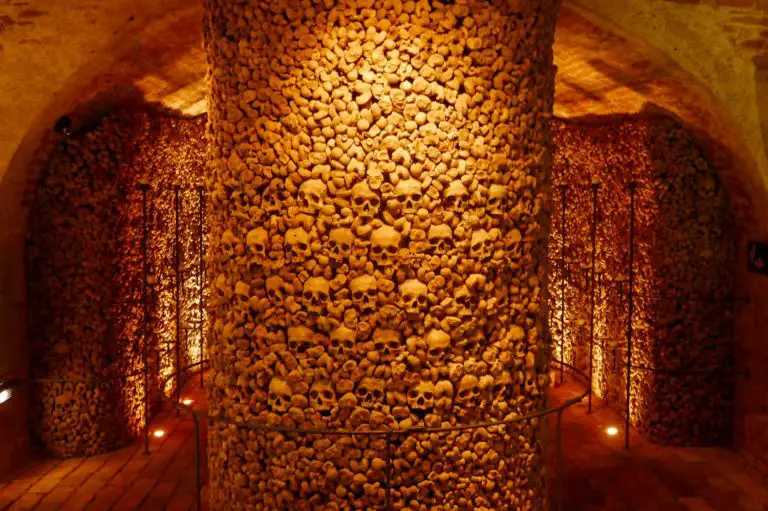
Surrounding this church, which is known as the ‘Kostnice u sv. Jakuba’ in Czech, was one of the main churchyard cemeteries in Brno. Eventually, as the city grew, there was no room left for new burials so a grave rotation system was adopted.
When a burial took place, the body was left in the grave for between 10 to 12 years. After that, the bones were taken out to make room for the next burial. The displaced remains were then relocated to the ossuary, where bones from thousands of graves were piled up.
It’s estimated that Brno Ossuary holds the bones of more than 50,000 people, which makes it the second-largest ossuary in Europe; only second to the Paris catacombs. The mortal remains laid to rest here include victims of the Swedish siege of Brno and the Thirty Years’ War, as well as many victims of plague and cholera epidemics.
Contributed by Wendy of The Nomadic Vegan. Follow her on Instagram !
Do you have any dark tourism examples to share? Let us know in the comments!
9 thoughts on “17 Must-Visit Dark Tourism Destinations Around the World”
Comuna 13 is spellt with only 1 -m-.
I wonder why choose the cemetery in Sucre, when so many others are more characteristic (eg. Père Lachaise in Paris) or even ‘livelier’ (eg. in Santiago de Chile).
Interesting & important topic though. I’m in the process of rewriting an article about the mines of Potosi. That is one dark tourism destination I strongly oppose, for one simple reason; people are still dying in there.
Thanks for the heads up Anthony! 🙂
I chose the cemetery in Sucre because it was a little bit off the beaten track – I like visiting the lesser known places as well as the more famous ones.
I can understand your point about the mines of Potosí and can see why you disagree with it. I must say though, from my own personal experience, I found my visit to be hugely enlightening. I was initially very torn about the idea of visiting an active mine but in the end, we chose a company run by an ex-miner who took us into the mine personally. In my opinion, our visit never felt voyeuristic at all and the miners seemed very grateful for the tourists visiting. A percentage of the tour cost went directly into the funding the healthcare of the miners when needed and also towards maintenance of the mine.
Such a great and informative post, Sheree! There were so many sites here that I was not even aware of – that is why sharing posts about dark tourist sites is so important! It really helps educate the world and helps us honour the past and the lives that were lost at some of these sites.
Like you, I am a huge fan of cemeteries. It is so wonderful that some countries treat death as a natural normal part of life (unlike some of our countries!). It really helps people remember happy memories of their loved ones they recently lost.
Thanks so much for being a part of it Crystal! I also learnt about loads of new dark tourism sites – it has definitely been an eduction as there was plenty of these I had never even heard of. It is definitely important to make sure the stories behind these places get told.
Thank you for including us in this fantastic collab!
I love how varied these sites are, and that you’ve included a lot of lesser know dark tourism destinations mixed in with some of the big ones. Even as professional dark tourists (that’s a thing, right?), we hadn’t heard of all of these places. The Shanghai Tunnels were completely new to me, but definitely want to head to Portland now.
I’m also a little embarrassed to admit that despite being to Hamburg MANY times, I was not aware of the St. Nicholas’ Church. I blame that on the fact that I was visiting a friend and not really touristing…
Awesome post everyone! I think it is really important for people to visit at least one of these in their lifetime. I think we are jaded from the major events that happened to our world and it’s people when we are told the stories. To see the places in real life, it puts life into perspective and how crazy life can be if we don’t fight for what is right.
I couldn’t agree more. Even though visiting these kinds of places is hard, I still think it is really important to help us realise the human effect of what we see on the television. As you said, it is only once you truly understand the devastation that you realise the importance of fighting for the right things.
Great article . I’ve been to a lot of places around the world and haven’t even heard of some of these .
Thanks Jennifer! I’ve certainly added a lot of places to my future visit list!
Leave a comment Cancel reply

Exploring the Darkest places
Welcome to the Darkest Travel: Your Gateway to the Dark and Mysterious! Discover the world of Dark Tourism and experience unforgettable journeys to haunting destinations.
Darkest Travel is a media and travel company dedicated to providing content about Dark Tourism and offering vacation stays in eerie locations.

In the shadowy realm of travel, a sinister fascination has crept into the hearts of wanderers—an obsession with the macabre, the mysterious, the haunted. Dark tourism, a chilling specter that has risen from the depths of human curiosity, now prowls the minds of intrepid travelers. Chernobyl and The Dark Tourist, twisted tales woven in the fabric of television, have birthed this unholy concept, an unhinging of reality that beckons the brave.
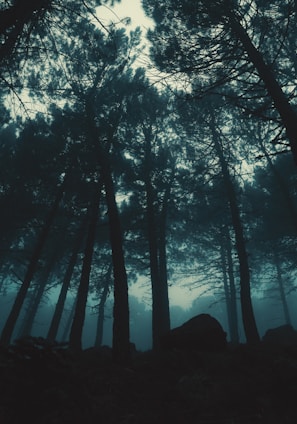
Darkest Travel : The Essence of Dark Tourism Exploring the Darkest in the World of Travel

Ever asked, " What is dark tourism about? " It's a journey into history's pivotal moments. Through dark tourism examples like haunted castles, silent battlefields, and forgotten towns, you feel the stories they hold. Explore different types of dark tourism with Darkest Travel, and let these tales grip your heart and spark your curiosity. It's not just travel; it's an adventure into the depths of our shared past. Are you in?
Chernobyl is a very popular destination for dark tourism, however unlike Auschwitz, this destination remains a hazard and is to date a dangerous site to visit due to the radiation levels still pertinent.
Following one of the worlds worst terrorist attacks, the 9/11 memorial site is one of the world’s top dark tourism attractions and is one of the most visited sites of any kind., berlin is home to a number of holocaust and ww2 exhibitions and is popular with educational tourists. i took a student group there a few years ago and i would definitely recommend it for anybody studying tourism or history..
Dark tourism shares a deep connection with educational travel, especially in the realms of its darkest facets. For numerous individuals, this serves as their primary, if not sole, incentive for embracing the shadows as dark tourists. Despite its somber nature, dark tourism provides a unique educational experience that captivates many. Personally, I have found immense value in exploring renowned cemeteries and delving into the history of World War II during my journeys through Berlin and Poland.

Unforgettable Tours

Netflix features a compelling series titled "The Dark Tourist," where journalist David Farrier delves into the realm of dark tourism, exploring how tourists interact with sites historically linked to death and tragedy. With each episode, Farrier embarks on a new journey to various dark tourism destinations. Having personally visited some of these sites and intrigued by others now on my bucket list, I highly recommend this show to anyone curious about dark tourism attractions worldwide. It offers a fascinating glimpse into this intriguing and enigmatic travel phenomenon.
Expert Guides
Top dark tourism sites.
There are a wide range of disaster tourism destinations (more than one would have imagined!), many of which would be overlooked as a dark tourism destination.

15+ Dark Tourism Spots
20+ Dark Tourism Spots
40+ Dark Tourism Spots

Haunted STAYS AND Creepy Crypts
Prepare for an otherworldly adventure as you step into the eerie embrace of history. Book your stay at our meticulously curated Haunted Landmarks and Creepy Crypts, where the past whispers secrets and the spirits roam free.
Alcatraz Prison San Francisco, USA
Gravensteen Castle Ghent, Belgium
Silver Mines Potosi, Bolivia
Port Arthur Penal Colony Tasmania, Australia
Lenin Mausoleum Moscow, Russia
Catacombs Paris, France

Darkest Stories Around the World
[email protected] (123) 123-1234
Subscribe to our newsletter
This website is powered by TravelAi , an UpNext Group Company.

Privacy Policy | Terms | Site map. Darkest Travel © 2023 All Rights Reserved
- Account and Profile
- Newsletters & Alerts
- Gift Subscriptions
- Home Page U.S. & World | Regional
- White House
- Courts and Law
- Monkey Cage
- Fact Checker
- Post Politics Blog
- The Post's View
- Toles Cartoons
- Telnaes Animations
- Local Opinions
- Global Opinions
- Letters to the Editor
- All Opinions Are Local
- Erik Wemple
- The Plum Line
- PostPartisan
- DemocracyPost
- The WorldPost
- High School Sports
- College Sports
- College Basketball
- College Football
- D.C. Sports Bog
- Fancy Stats
- Fantasy Sports
- Public Safety
- Transportation
- Acts of Faith
- Health and Science
- National Security
- Investigations
- Morning Mix
- Post Nation
- The Americas
- Asia and Pacific
- Middle East
- On Leadership
- Personal Finance
- Energy and Environment
- On Small Business
- Capital Business
- Innovations
- Arts and Entertainment
- Carolyn Hax
- Voraciously
- Home and Garden
- Inspired Life
- On Parenting
- Reliable Source
- The Intersect
- Comic Riffs
- Going Out Guide
- Puzzles and Games
- Theater and Dance
- Restaurants
- Bars & Clubs
- Made by History
- PostEverything
- Entertainment
- Popular Video
- Can He Do That?
- Capital Weather Gang
- Constitutional
- The Daily 202's Big Idea
- Letters From War
- Presidential
- Washington Post Live
- Where We Live
- Recently Sold Homes
- Classifieds
- WP BrandStudio
- washingtonpost.com
- 1996-2018 The Washington Post
- Policies and Standards
- Terms of Service
- Privacy Policy
- Submissions and Discussion Policy
- RSS Terms of Service

Dark tourism, explained
Why visitors flock to sites of tragedy.

Every year, millions of tourists around the world venture to some of the unhappiest places on Earth: sites of atrocities, accidents, natural disasters or infamous death. From Auschwitz to Chernobyl, Gettysburg, the site of the Kennedy assassination and the 9/11 Memorial in New York, visitors are making the worst parts of history a piece of their vacation, if not the entire point.
Experts call the phenomenon dark tourism, and they say it has a long tradition. Dark tourism refers to visiting places where some of the darkest events of human history have unfolded. That can include genocide, assassination, incarceration, ethnic cleansing, war or disaster — either natural or accidental. Some might associate the idea with ghost stories and scares, but those who study the practice say it’s unrelated to fear or supernatural elements.
“It’s not a new phenomenon,” says J. John Lennon, a professor of tourism at Glasgow Caledonian University, in Scotland, who coined the term with a colleague in 1996. “There’s evidence that dark tourism goes back to the Battle of Waterloo where people watched from their carriages the battle taking place.”

The hit US drama "Chernobyl" brought a new generation of tourists to the nuclear disaster zone. (Genya Savilov/AFP via Getty Images)
That was in 1815, but he cites an even longer-ago example: crowds gathering to watch public hangings in London in the 16th century. Those are relatively modern compared with the bloody spectacles that unfolded in the Colosseum in Rome.
There aren’t official statistics on how many people participate in dark tourism every year or whether that number is on the rise. An online travel guide run by an enthusiast, Dark-Tourism.com , includes almost 900 places in 112 countries.
But there’s no question the phenomenon is becoming more visible, in part thanks to the Netflix series “Dark Tourist” that was released last year. And popular culture is fueling more visitation to some well-known sites: After the HBO miniseries “Chernobyl,” about the 1986 power plant explosion, came out this spring, travel companies that bring people to the area said they saw a visitor increase of 30 to 40 percent. Ukraine’s government has since declared its intention to make the Chernobyl Exclusion Zone an official tourist spot, despite lingering radiation.
[How to navigate the etiquette of dark tourism]
Philip Stone, executive director of the Institute for Dark Tourism Research at the University of Central Lancashire, in England, says anecdotally that he sees the appetite for such destinations growing.
“I think, for political reasons or cultural reasons, we are turning to the visitor economy to remember aspects of death and dying, disaster,” he says. “There is a kind of memorial mania going on. You could call that growth in dark tourism.”

(Illustrations by Laura Perez for The Washington Post)
Why are tourists so enamored with places that are, as Lennon puts it, “synonymous with the darkest periods of human history?” Academics who study the practice say it’s human nature.
[Ukraine wants Chernobyl to be a tourist trap. But scientists warn: Don’t kick up dust.]
“We’ve just got this cultural fascination with the darker side of history; most history is dark,” Stone says. “I think when we go to these places, we see not strangers, but often we see ourselves and perhaps what we might do in those circumstances.”
“When we go to these places, we see not strangers, but often we see ourselves and perhaps what we might do in those circumstances.”
Philip Stone, executive director, Institute for Dark Tourism Research at the University of Central Lancashire
There is no one type of traveler who engages in dark tourism: It could be a history buff who takes the family on a road trip to Civil War battlefields, a backpacker who treks to the Colosseum in Rome, or a tourist who seeks out the near-abandoned areas near the Fukushima Daiichi Nuclear Power Plant disaster, in 2011, in Japan.

Visitors walk between barbed wire fences at the Auschwitz I memorial concentration camp site in Oswiecim, Poland. (Sean Gallup/Getty Images)
Those who are most familiar with the phenomenon do not condemn it. In fact, they argue that the most meaningful dark-tourism sites can help visitors understand the present and be more thoughtful about the future.
“These are important sites that tell us a lot about what it is to be human,” says Lennon, the tourism professor. “I think they’re important places for us to reflect on and try to better understand the evil that we’re capable of.”
There are even efforts underway to research the way children experience dark tourism, a joint project between the Institute for Dark Tourism Research and the University of Pittsburgh.
Mary Margaret Kerr, a professor of education and psychiatry at the University of Pittsburgh, says the idea came about when the National Park Service asked her to help create a team to design children’s materials for families who visit the memorial to United Airlines Flight 93, which was hijacked on Sept. 11, 2001, and crashed in a field in Pennsylvania.
Her research team now includes middle-school students who have studied how their peers interact with the National 9/11 Pentagon Memorial, in Washington, or the site of the Johnstown flood, in Pennsylvania, which killed more than 2,200 in 1889.

(Illustration by Laura Perez for The Washington Post)
“We wouldn’t want families to stop traveling, and adults want to see these places for very good reasons,” Kerr says. “It’s not so much making the decision for parents whether you take the children or not, but what are the appropriate safeguards."
She said the goal is to provide appropriate safeguards and ways to experience a site, even for children too young to grasp the history, “so the family can be there together, but each member of the family can take meaning that works out for them at their age and stage.”
As more sites with dark histories become popular spots — even part of organized tour packages — experts say there is a risk that they could become exploited, used to sell tchotchkes or placed as backdrops for unseemly photos.
“It does kind of invite that passive behavior — let’s call it that touristy behavior — that might be out of place,” Stone says.

Visitors look at the bodies of eruption victims exposed in the ruins of ancient Pompeii. (Mario Laporta/AFP via Getty Images)
Bad conduct by tourists at sensitive sites — smiling selfies at concentration camps, for example — has been widely shunned on social media. The online Dark-Tourism.com travel guide cautions against such behavior, as well as the ethically questionable “voyeurism” of visiting an ongoing or very recent tragedy to gape.
“These are important sites that tell us a lot about what it is to be human. I think they’re important places for us to reflect on and try to better understand the evil that we’re capable of.”
J. John Lennon, tourism professor at Glasgow Caledonian University
“What IS endorsed here is respectful and enlightened touristic engagement with contemporary history, and its dark sites/sides, in a sober, educational and non-sensationalist manner,” the site says .
Lennon says he’s sometimes “dumbfounded” by some of the behavior that gets publicized, but he declines to say what the right or wrong way is for tourists to behave. Overall, he says, he still hopes that by visiting places with dark histories, people are becoming better informed about atrocities like racial and ethnic cleansing.
“I’m heartened by the fact that they choose to try to understand this difficult past,” Lennon says.
Berlin’s Holocaust memorial is ‘not a place for fun selfies’
Will gun violence lead to a growing ‘dark tourism’ industry?
A selfie ban in the Czech Republic is the latest effort to combat bad tourist behavior
Hannah Sampson
Hannah Sampson is a staff writer at The Washington Post for By The Way, where she reports on travel news.
More stories
Airline helpfully tweets advice on where on a plane you are least likely to die in a crash
Fatality rates are usually not what customers want to hear about, but one carrier's regional Twitter account went there anyway.

Can tourism ‘pledges’ help keep visitors on their best behavior?
Destinations across the world are turning to a new tool: a morality-based honor code, largely without concrete punishments.

- [email protected]
- +44 203 983 9653

- Dark Tourism Holidays
DARK TOURISM HOLIDAYS
If you are looking to break away from the norm and explore a place that is associated with a dark past, you have definitely come to the right place. Dark tourism holidays takes you to places that are identified with death, disaster, tragedy, suffering, destruction and even paranormal activities. Although visiting Dark tourism holidays is not something to be overjoyed about, it will give you an adrenaline rush and a surreal feeling which will be unlike anything you’ve ever experienced. Added to that, it also allows you to literally take a walk down memory lane and get a deeper understanding of these destinations. So, if you are a curious George, thirsty for a unique and out of this world experience, dark tourism holidays are perfect for you.
How can I pick the perfect Dark tourism holidays?
The perfect choice for your dark tourism holidays depends on what you are most keen to see. Although dark destinations are sites involved with much tragedy, death and destruction, they can take many forms. Disasters can happen in many different ways, be it, natural or industrial. Thus, there are different types of dark tourism destinations for you to choose from. To name a few:
– Disaster area tourism – Grave tourism – War or battlefield tourism – Holocaust tourism – Genocide tourism – Prison tourism – Cold war and iron curtain tourism – Terrorist tourism – Murderers and murderous places tourism – Dark amusement tourism
Dark tourism holidays will definitely take you out of your comfort zone, but it will provide you with invaluable knowledge and information about some of the most tragic events in history. It is a way of understanding the past, in order to make a better future.
Still don’t know what dark destination to pick for your trip? Then head over to our very own blog to find an article on some of the most iconic dark tourism destinations in the world.
Why should I book my dark destination with Aero Travels?
As renowned travel agents in the UK, we at Aero Travels are always looking to provide unique experiences to our customer. We strive to break the taboo associated with dark destinations and provide our customers with the opportunity to witness the culture, significance and rich history found in these places.
We have put together some amazing dark tourism packages for you to explore and witness some of the most talked-about dark destinations in the world. That means you don’t have to worry about booking flights, accommodation or tours because we will be doing all that for you. All you need to do is simply choose the dark destination you wish to explore and we will take care of the rest.
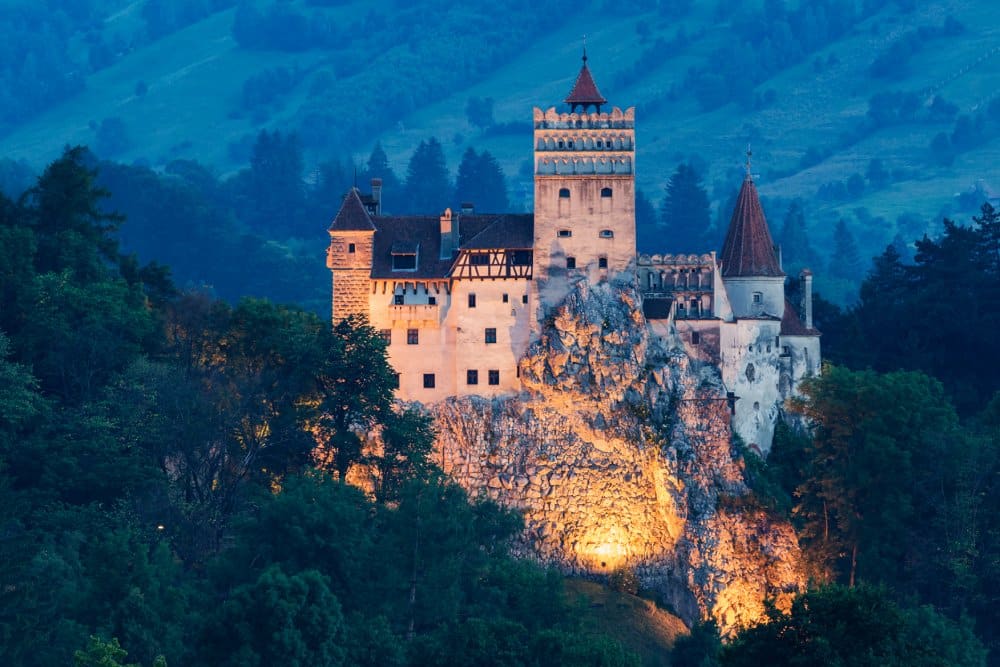
Bucharest Holiday
2 nights Flights Hotel bed and Breakfast Dracula's Castle Tour

Paris Catacombs Tour
2 nights Flights Hotel Bed and Breakfast Basis Catacombs of Paris Tour

Pompeii Mt.Vesuvius Holiday
3 nights Flights Palazzo San Michele bed and Breakfast Basis Dracula's Castle Tour
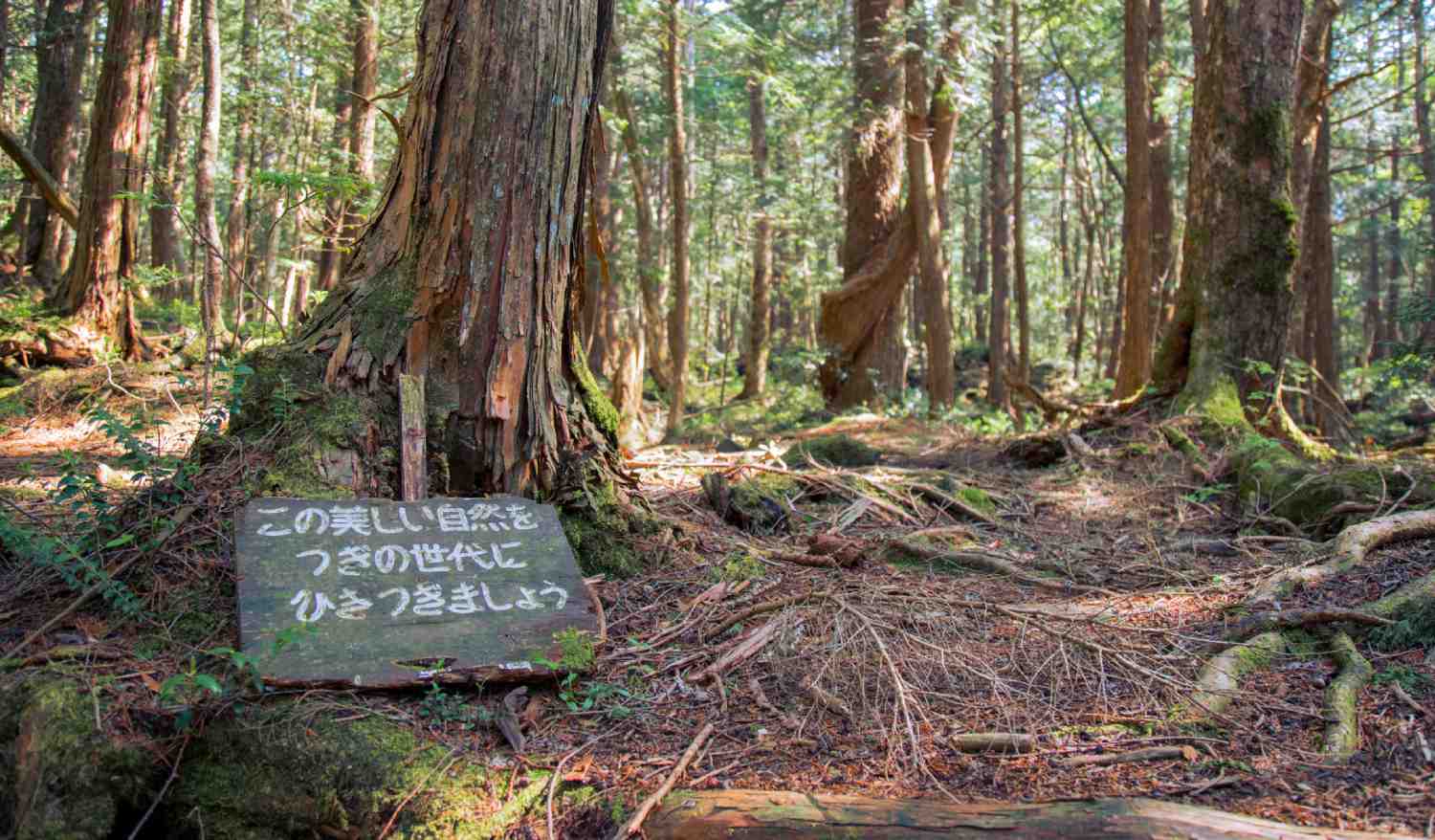
- Aokigahara Forest, Japan
5 nights Flights Agora Place Asakusa bed and Breakfast Aokigahara Forest Trekking Tour

Killings Fields - Cambodia
5 nights Flights Pacific Hotel Phnom Penh bed and Breakfast Killing Fields and Prison S21 Tour

Hiroshima , Japan Dark Holiday
5 nights Flights APA Hotel Hiroshima-Ekimae Ohashi bed and Breakfast Basis Hiroshima Peae Walking Tour

The Day of the Dead Festival - Mexico
5 nights Flights ibis Cancun Centro bed and Breakfast Basis The day of the Dead Festival

The Dungeons of London
3 nights April-September 2022 ibis London Earls Court bed and Breakfast Basis The Dungeons London Entrance Ticket
Dark Tourism Holidays FAQ
Visiting dark tourism destinations allow travellers to walk back in time and take a glimpse into the darkness that existed at some point in history. It also allows them to understand the pain and suffering that the victims had to experience as well as their unwavering perseverance. Today, dark tourism holidays have become widely popular among travellers as it is a unique, intriguing, interesting and not to mention educative experience. Many people go in search of dark destinations to learn and better understand a grim incident or situation that occurred in the past and to pay their respects.
Dark tourism is definitely not for the faint-hearted. If you are hoping to visit any dark tourism destinations, ensure that you are comfortable with where you are going and what you will be witnessing. That being said, it should also be noted that travellers of various age groups; that is from young students to senior citizens, have shown much interest in dark tourism. Thus, it is safe to say that its appropriateness has nothing to do with age, but with one’s mindset.
Dark tourism holidays can vary from visiting a light dark destination such as the London Dungeons, where people have fun, to tourists visiting scenes of mass death or extreme tragedy like Pompeii in Italy, where you feel the pain and suffering that was caused. Thus, the dark tourism spectrum on one end will take you to extremely dark destinations that often involve an educational element such as The Killing Fields of Cambodia. Or on the other hand, it will take you to a lighter dark destination like the Dracula Castle in Bucharest where it is more commercialized and displays romanticized versions of dark history, for fun and entertainment.
The main purpose of dark tourism sites around the world is to commemorate the dead and educate oneself. It allows visitors to emotionally absorb themselves in a place of tragedy and to educate themselves to ensure that history will never repeat itself. People need to immerse themselves in the culture and tragic pasts of different parts of the world in order to truly reflect on history.
- Disaster Tourism
- Grave Tourism
- Holocaust Tourism
- Cold War and Iron Curtain Tourism
- Nuclear Tourism
- Prison and Persecution Site Tourism
- War or Battlefield Tourism
- Genocide Tourism
- Terrorist Tourism
- Dark Amusement Tourism
- Murderers and Murderous Places Tourism
Although dark tourism sounds like a dangerous concept and many people perceive it as visiting ‘dangerous places’, it most certainly is not dangerous at all. Dark tourism is merely tourism that directs travellers to places that are identified with death and tragedy. Most of these locations are completely harmless now and does not put your life at risk. Thus, it is important to bear in mind that dark tourism is not about putting people’s lives at risk. These destinations were indeed dangerous at some point in history however, not so much anymore.
Dark tourism holidays are indeed important to society as they give a positive impact to the economical side of view by generating income for the affected communities. Furthermore, it benefits both the residents and the tourists emotionally and creates awareness to ensure that history will not be repeated. Dark tourism definitely takes you out of your comfort zone and allows you to experience new things and change your view of the world.
Dark tourism is also known as Black Tourism, Morbid Tourism, Thana Tourism and Grief Tourism.
When embarking on dark tourism holidays, it is important to keep in mind that it is a sensitive destination and there is a different set of manners that are required, no matter how dark.
- Don’t touch anything.
One of the most common mistakes that tourists make when visiting most destinations is touching ruins, artefacts, monuments, gravestones or whatever is there in plain sight. This is completely unacceptable, especially when visiting dark tourism destinations as these places should be visited with the same kind of respect as visiting a religious site.
- Learn a little bit about the cultures and religions outside of the clichés.
Familiarize yourself with a little about the history of the places you visit and create cultural awareness within yourself beforehand. Furthermore, have an open mind when visiting these destinations instead of blindly believing everything you see and hear.
- Rethink when and where you take selfies.
Be mindful of where you are and behave respectfully. Dark tourism spots are to be treated extremely delicately, so busting out your selfie stick and snapping away is not something that should be practised at such sites. First, check if photography is permitted and act accordingly.
- Dress and behave appropriately.
Most dark tourism site around the world have witnessed great tragedy and loss. Thus, when visiting such places it is necessary to dress appropriately and show your respect to the departed souls as well as the community.
- Chernobyl, Ukraine
- Auschwitz Concentration Camps, Poland
- Pompeii, Italy
- Hiroshima, Japan
- Catacombs, Paris
- Killing Fields, Cambodia
- The Day of the Dead Festival, Mexico
- Dracula Castle, Bucharest
- The London Dungeons, England
Book your holidays now
Call 0203 983 9653 , to speak to a travel consultant
Related Articles
Dark tourism explained by british tour operators., top 10 dark tourism destinations to visit in 2022/2023.

REG NO. 12151309

Our Location
4 Byfield Court Station Road, West Horndon, Brentwood, England, CM13 3TZ, United Kingdom
- 0203 983 9653
Quick Links
- Privacy Policy
- Terms & Conditions

or continue with
Reset Password
Enter the e-mail address associated with the account. We'll e-mail a link to reset your password.
GET YOUR HOLIDAY QUOTE
You're almost there , make a free reservation.
(24 Hours Validity)
- Lock your Fare
- No prepayment needed
- No credit card needed
11 Of The Best Dark Tourism Destinations For First-Timers
Dark tourism is relatively new in the world of travel, and these destinations are perfect for those looking to get a taste of it.
Netflix's hit series Dark Tourist opened viewers' eyes to a niche that's been a part of travel in one way or another for centuries. Humans are naturally drawn to the macabre. It stirs something inside to witness places associated with darkness, a somewhat unexplainable thirst to understand things that seem unbelievable.
Though dark tourism has come under criticism for being exploitative, visiting sites with dark histories is an indispensable way to learn about how things happened, why they did, and how they can be prevented in the future. These destinations around the world are perfect for travelers interested in learning about the world in a way that's often missing from formal education.
*Note: As always, it's essential to be respectful of one's surroundings when traveling. Due to the nature of these places and their sensitive history, it's vital to be especially respectful when visiting.
Updated by Lauren Feather, February 18, 2022: The world overflows with just as much horrific history as that which is glorious. Many of the planet's most devastating events still echo suffering of past where they once happened, and it's possible to visit such places in order to learn all about them. With dark tourism popularity on the rise, much of the world's most discerning travelers with an interest in natural disasters and volatile history choose to enrich their learning by actually visiting the areas where such events took place. As such, some of the most popular places were darkness once occurred have been added to this fascinating yet macabre list of dark tourism destinations. And as always, please tour these places respectfully and with an open mind and heart.
11 Eyjafjallajökull, Iceland
The eruption of Eyjafjallajökull volcano put Iceland on the global map in April 2010. Most people had never even heard of it, until the massive ash cloud it spewed out grounded flights for over two weeks. The ordeal cost the European economy about five billion dollars, however tourism in Iceland has since accelerated, and consequently, helped to compensate the loss.
Before the volcano let rip, most travelers wouldn't even think of visiting the Land of Fire and Ice , but thanks to the fame it achieved (for somber reasons albeit) tourists from all corners of the world have added the cold northerly country to their bucket lists. From glaciers, icy lagoons, and the legendary Northern Lights to the midnight sun and the volcano that caused all the chaos, travelers have so much to do and see in this chilly country of spectacular icy scenery.
Related: 10 Things To Do In Iceland (That Aren't The Blue Lagoon)
10 Pompeii, Italy
Pompeii is perhaps one of the first dark tourism sites to gain popularity, attracting international travelers for over 250 years. The fallen city is one of the best-preserved places to see Ancient Roman architecture, due significantly to the violent eruption of Mount Vesuvius.
Volcanic ash blanketed the city, somewhat ironically protecting the structures from the elements. The residents trapped in Pompeii perished, their bodies transformed into plaster statues. Mount Vesuvius remains active, and scientists say the volcano is overdue for an eruption.
Related: Pompeii Was Destroyed 1,924 Years Ago, But Many People Still Don't Know These Things About The City
9 Catacombs - France
Tourists flock to Paris' Catacombs to witness a massive, real-life underground graveyard that's inspired literature and film over the years. During the 18th-century, Paris' population expanded faster than its cemeteries could, and overcrowding meant burials posed a threat to human health.
Officials decreed to use the city's underground quarries as makeshift cemeteries, at first simply tossing the deceased into the tunnels. Eventually, the remains were stacked in an orderly fashion, with skulls lining the walls like a macabre interior design choice. Upon entrance, visitors are greeted with an exhibition room to learn about the history of the Catacombs, and two kilometers of tunnels are open for observation.
Related: The Paris Catacombs Are The Final Resting Places Of Six Million People, And You Can Visit Them
8 Auschwitz - Poland
The atrocities that occurred during the Holocaust are among the worst in human history. It's unfathomable to consider how human beings were held against their will, forced to labor, starved, abused, experimented on, and exterminated. There is no nice way to put it, and it serves no purpose to surround the tragedy with euphemisms.
Visiting the notorious concentration camps of Auschwitz allows people to feel the weight of the atrocities in a way that learning about them through the pages of a book never could. It's a sobering experience that forces people to confront the harsh realities of impenetrable darkness and learn about the events that led to such a deep stain in the fabric of human history.
7 Phnom Penh, Cambodia
Cambodia is home to the stupefying Angkor Wat, which is one of the world's largest and most impressive religious monuments that's a UNESCO listed temple. Despite its intrigue and beauty, it doesn't overshadow its horrific past and the people who are still recovering from the suffering they endured under the Khmer Rouge regime only a few decades ago - during which an estimated one million people were brutally murdered.
Travelers with a discerning eye can get a feel for the dark times and misery when they visit the Tuol Svay Prey High School and the killing fields of Choeung Ek, which, in spite of the scars that are still present, are ever important grounds in Cambodia's volatile history that played a crucial role in the country becoming what it is in the modern day.
Related: A Travel Guide To Cambodia: Tourists Should Plan Their Trip Around These 10 Things
6 Hiroshima - Japan
Since its invention, nuclear weaponry has gripped humans in fear. Drills during the Cold War sent children beneath their desks in preparation for an attack. In recent years, the possibility of nuclear war regularly echoes from the nightly news. Several countries currently possess bombs powerful enough to wipe out entire nations, a sad fact considering the destruction of Hiroshima and Nagasaki during World War II.
The A-bomb destroyed the city and took the lives of thousands of innocent people. The residents of Hiroshima are fiercely dedicated to promoting peace on a grand scale. To visit Hiroshima is to witness the strength of humanity to rebuild. UNESCO designated the A-bomb Dome a World Heritage site, the building preserved as a reminder of the horrors of nuclear warfare.
5 Port Arthur - Tasmania
Located on the Tasman Peninsula is one of several convict sites steeped in dark history. Convicts at Port Arthur were subject to brutal floggings, hard labor, and long stints in solitary confinement, a practice that's frequently called into question for its cruelty. Many men lived and died within the walls, their hard work responsible for large chunks of architecture in Tasmania. Guided tours and interactive exhibits educate guests about Port Arthur's history, leaving none of the dark bits out of the stories.
Related: Here’s Everything You Can Do In Tasmania During Your First Time There
4 The 9/11 Memorial & Museum - United States
Two decades have gone by since the attack on the World Trade Center, and people can still vividly remember exactly where they were when it happened. Thousands of people lost their lives on September 11, 2001, and the New York City skyline changed forever. In the aftermath, the country put all its differences aside and united to rebuild.
People slowly cleared the rubble, dust, and debris. Life resumed as it has and will continue to in the wake of tragedy. Ground Zero and the 9/11 Memorial and Museum are among the top-visited dark tourist destinations worldwide. It is difficult to imagine what the city looked like 20 years ago on that fateful day. It's amazing to think about how human beings can come together to tend to the emotional wounds left behind by such events.
3 Berlin Wall - Germany
A majority of the Berlin Wall was dismantled after the Cold War, but fragments throughout Berlin serve as a reminder of the negative impacts division has on society. The large concrete barrier separated East and West Berlin for nearly 30 years. An area known as the "death strip" contained guard towers, beds of nails, barbed wire, and more, the defenses intended to keep people from crossing.
In 1989, the world watched on as the Berlin Wall fell, symbolically reuniting Germany and marking the fall of Communism in Europe. The remnants of The Berlin Wall are scattered throughout the world, but the largest portions can be found in Berlin. Stunning graffiti from past and present add pops of color to the city, a reminder of art's transformative and healing power.
2 Chernobyl, Ukraine
There's not a soul in the world that doesn't know about the devastating event that took place in Chernobyl in 1986, where a nuclear power plant explosion set off an apocalyptic chain of events that saw the place become a dangerous, desolate wasteland. The bravest of travelers can take guided tours of the uninhabitable, decaying city of Pripyat to see a real-life post-apocalypse that still continues today , where empty schools, abandoned residences, rusted structures overgrown with greenery, and derelict buildings stand as a reminder of the horrors that once occurred.
At the time, local communities were told they were only evacuating their homes for three days, however, what they didn't know was that they were never going to return ever again. Countless power plant staff, rescue services, and civilians died as a result of the tragedy - some right in the aftermath, whilst others suffered for many years, eventually passing of terminal diseases like cancer - caused by exposure to the dangerous radiation emitted by the power plant's explosion.
Related: Chernobyl: Over 35 Years On, Is It Actually Safe To Visit?

1 Darvaza Gas Fire Crater, Turkmenistan
A large crater has been burning in Darvaza, Turkmenistan for 50 years now, attracting tourists to witness the site commonly referred to as the "Gates of Hell." The natural gas field in the middle of the desert collapsed in the 1960s. It was set ablaze in 1971, though there are no solidified records of who did it or why. The dark tourist destination in the desert is a popular spot for wild camping, and thousands of travelers head to Turkmenistan to observe a piece of the earth on fire.
Next: Dark Tourism: What It Is And How To Do It Respectfully

Dark tourism : harder, better, faster, darker
13 min reading time
Published on 23/03/21 - Updated on 17/03/22

There are many categories of tourism: beach tourism, medical tourism, cultural tourism, urban tourism, green tourism, etc., and they respond to the different expectations and desires of travellers. In recent years, one type of tourism has stood out from the others due to its singularity and sudden popularity: dark tourism. But what does this term encompass, who are its followers and where can it be practiced?
Dark tourism is not so new but it has become very popular over the last few years due to series thrilling the crowds on unusual themes such as nuclear disasters or the lives of famous criminals. The rise of social networks is also an important factor in bringing this type of tourism to light, even if, as we shall see later, they are not always as beneficial as all that.
The origins of dark tourism
Dark tourism refers to travel that involves visiting places associated with death, suffering, grief or disaster. The term was first used in 1996 by two researchers from Glasgow Caledonian University, John Lennon and Malcolm Foley, and was later taken up by Dr Philippe Stone who now works at the Dark Tourism Research Institute based in Lancashire, England. It is also referred to as thanatourism, a term used by Professor A.V. Seaton which is a contraction of Thanos, the personification of death in Ancient Greece, and tourism.
Despite what one might think, this type of tourism is not recent; on the contrary, according to research and academic studies on the subject, it dates back to Gallo-Roman times. Indeed, crowds were gathered in arenas to watch gladiatorial fights and killings, and this phenomenon continued in the Middle Ages with fights between knights and executions in the public square. Humankind has always had a certain attraction for everything that has to do with death, as evidenced by the leading tourist attraction in Paris during the 19th century, which welcomed thousands of visitors every day: the morgue. Also, battlefields such as Waterloo and Gettysburg were visited by curious people wanting to see 'what it looks like in real life' soon after the fighting had ended.
Lennon and Foley state that these visits are "motivated by a desire for real or symbolic encounters with death. ". The motivations for visiting dark tourism sites have been more or less the same for centuries: contemplation, the desire to better understand history and to immerse oneself in it at the same time. But in the age of smartphones and social networks, a feeling of voyeurism is increasingly felt. According to Lennon and Foley, the "primal interest" in this phenomenon has changed dramatically over time, especially in our consumer society. They add that "dark tourism has changed a great deal today and current trends are marked by a disenchantment linked to postmodernity. ". Thus a large proportion of modern dark tourists are looking for sensationalism and more or less disturbing experiences that take them out of their daily lives.
The different kinds of dark tourism
Disaster tourism.

Natural or man-made disasters are a real subject of fascination for many travellers who do not hesitate to put themselves in danger to discover places marked by these sad accidents. The 11th of March marked the 10th anniversary of the nuclear disaster in Fukushima , a region of Japan that experienced an earthquake, a tsunami and then the explosion of its nuclear power plant in the space of a few hours. Today, the cities devastated by this disaster have become tourist attractions for thrill-seeking tourists; in 2017, no less than 100,000 visitors were counted in this disaster area. The region is composed of 3 zones, the green zone which is open to all and is considered as the least dangerous in terms of radioactivity, the orange zone which is only accessible to scientists and experts and finally the red zone which is strictly forbidden. Several companies offer bus tours of the region, equipping tourists with masks and Geiger counters to measure radiation levels. Chernobyl , a place marked by the same disaster, attracts 72,000 visitors during 2018, a figure that is constantly increasing and has seen a real peak, plus 40% of bookings, in 2019 following the broadcast of the HBO series inspired by the disaster. Unlike Fukushima , everything can be visited today, including the forbidden zone around the reactor that caused the disaster. Authorities and operators assure that the visit of the site is safe but recommend not to smoke, drink or eat in order not to inhale toxic particles and to cover the skin as much as possible to avoid any contact with potential radioactive dust. The visit continues in the ghost town of Pripyat , a town on the outskirts of the power plant that was abandoned and has remained untouched since, seemingly frozen in time. The President of Ukraine wants to encourage tourism in the area with development work such as better hiking trails and an improved mobile phone network.
War tourism

Dark tourism is not only about places that have experienced horror in the past, war tourism is a type of tourism which is practised in territories that are currently experiencing war and suffering. It is also known as extreme tourism because of its dangerous nature, and in recent years it has become increasingly popular. Among the trendy destinations for this type of tourism are Iraq , Syria , Afghanistan and Pakistan . To go to these countries, which are strongly discouraged or even forbidden by the Ministry of the Interior's website, there are two solutions: register as a volunteer for a mission with an NGO in high-risk countries or turn to a travel agency specialising in war tourism, such as Disaster Tourism in the United Kingdom or War Zone Tours in the United States . These agencies offer pre-departure training to teach travellers how to communicate by radio, how to shoot and how to evacuate a wounded person if the situation requires it. A useful training when we know that in 2016, 6 tourists were slightly injured by Taliban rocket fire on the road to Harat in Afghanistan . The practice is also developed in Latin America and more specifically in the numerous favelas of Rio de Janeiro . A number of them are still in the grip of gang wars, but this does not prevent tourists from visiting them accompanied by a guide to ensure their safety. This type of tourism has been developing since the 2010s with the existence of several specialised tourist agencies such as Favela Tour.
Banditry tourism

The world has always been fascinated by the great bandits and gangsters, and this is reflected in the many films and series that tell their stories. In 2015, Netflix released the first season of the series "Narcos", which follows the career of the world's most famous drug trafficker: Pablo Escobar. The series was a hit and since then thousands of tourists have been flocking to the city of Medellin in Colombia , where Pablo Escobar built his drug empire. His spirit is still very present in the streets of the city, through graffiti but also a number of merchandising products such as mugs, stickers and other souvenirs bearing his image. It is easy for tourists to follow in the footsteps of the famous criminal thanks to the many "Pablo Escobar Tours" run by agencies and locals alike. The tour consists of two major sites, the tomb of the drug trafficker and the Catedral, the prison built by him in which he spent many years with the possibility of coming and going as he pleased. It is even possible to meet Popeye, Pablo Escobar's former right-hand man, who has now repented and is making Youtube videos about his former life as a bandit. Travellers can also discover the "barrio Escobar", a neighbourhood named after him because most of the houses were built by him to give back to poor families. A museum dedicated to him has even been erected in the neighbourhood to pay tribute to him. A little further north on the continent, in the United States , there is also the city of Chicago , which was the scene of various crimes perpetrated by a great name of banditry of the last century: Al Capone. Many of the places frequented or marked by the gangster's imprint have been destroyed by the city, but his spirit still inhabits the streets and avenues of Chicago , an atmosphere sought after by tourists who wish to discover the Chicago of the Prohibition era. It is still possible to visit bars and speakeasies where Al Capone would have had a drink and to go and listen to jazz at the Green Mill club and ask to sit on the number 1 bench, which is supposed to be the bench where Scarface sat. The more adventurous will go as far as a mythical island to follow the bandit's trail, Alcatraz Island where the famous prison of the same name is located and where he was held for several years.
Macabre and surnatural tourism

Serial killers, psychopaths, witches, ghosts and other spirits are both frightening and exciting subjects for some people. A large number of legends, myths, documentaries, films and series have made them their main subject, which partly explains the craze around them and therefore the popularity of sites and tourist attractions dedicated to them. One of the best known examples is the famous murderer Jack the Ripper who was active in London at the end of the 19th century, particularly in the Whitechapel area. Many guided tours are organised to discover the emblematic places marked by the serial killer's passage. This is currently the main attraction of the district, which is not really touristy outside of this, and since 2015 a museum dedicated to Jack the Ripper has been installed there. Another town marked by its past, Salem , located in the state of Massachusetts in the United States , has used its particular history to become a must-see place for dark tourism enthusiasts. The town is known worldwide for its witch hunt, which resulted in the killing of 25 people accused of witchcraft. Since then, Salem has become a symbolic place for witchcraft, and the town is now full of esoteric shops, herbalist shops and fortune-telling practices. Numerous museums have been set up to tell the story of the famous Salem trials. The house of the judge in charge of the trials remains intact and attracts many curious visitors. The town plays on this mystical image and can be discovered at night by lantern during a ghost tour, which tells stories of witches and ghosts that still haunt the town's streets. However, when it comes to haunted places, it's Scotland and its many castles that attract the most tourists looking for a scare. The most famous of these is in the city of Edinburgh , which is itself considered to be the scariest city in Britain .
Necrotourism

Dark tourism is not only about sensationalism and the desire to be scared, a simple walk through a cemetery is also part of this practice. One of the most emblematic places is undoubtedly the Père Lachaise cemetery in Paris , which is visited by 3 million tourists every year, mainly because of the presence of numerous celebrity graves such as Edith Piaf, Jim Morrison, Alfred de Musset, Oscar Wilde and many others. A similar cemetery can be found in London , Highgate Cemetery, where the lush nature of the area is matched by the graves of famous people. Egypt is home to another popular burial ground, the famous Valley of the Kings where Pharaoh Tutankhamun is buried, a place that attracts thousands of visitors from all over the world every year. However, there is a noticeable difference between the two European cemeteries and the site of the pharaohs' tombs, as Egypt makes every effort to welcome visitors to the site with guided tours as tourism in this region is centred around this site. While in France and England there is no real infrastructure or services dedicated to visitors, these sites simply add to the long list of places attracting 32 million and 17 million visitors respectively in 2017. In Guatemala , the city of Quetzaltenango has decided to play the thrill card by offering visits only on the evenings of the full moon to its cemetery with its original and colourful tombs, accompanied by a guide who tells the history and legends surrounding the site. An even more unusual visit is offered in the French capital, the discovery of the city's catacombs. A somewhat frightening dive into the history of Paris that 250,000 tourists make every year. The site covers an area of 11,000m² and contains no less than 6 million bones from various cemeteries in the city. On the route, an inscription warns visitors, "Stop! This is the empire of death! "setting the tone for the visit and adding to the eerie atmosphere of the place.
The abuses and ethical problems surrounding dark tourism
Dark tourism is still not well known today, so it is difficult to control it in order to avoid any form of abuse, which is unfortunately frequent. Moreover, this type of tourism is often confused with memorial tourism, which is a form of tourism that consists of highlighting the historical heritage of a place, particularly when the site in question has been marked by a specific event, significant in that it may be founding or potentially painful. The places visited may be similar but the motivation of the travellers differs greatly, in the case of remembrance tourism people go to these places as a duty of remembrance, homage and understanding of the events whereas dark tourists are more fascinated by the morbid and frightening side of the sites.
This difference is strongly felt in places such as the Auschwitz camp, which welcomed 2.3 million visitors in 2019, with a wide range of behaviour observed. Some visitors do not hesitate to pose in the gas showers or balance on the rails of the death wagons, thus failing to respect the memory of all the deportees exterminated in the camp. Forcing the Auschwitz Memorial to react by posting these inappropriate photos with the following message: "When you come to Auschwitz, remember that you are on a site where a million people were killed. Respect their memory. There are better places to learn how to balance on rails than on the site that symbolises the deportation of hundreds of thousands of people to their death. The same problem is observed in Chernobyl , a place brought back to the forefront by the eponymous series, which since then has seen waves of Instagrammers looking for the photo with the most likes on social networks, and for this purpose some even pose in their underwear in the middle of this post-apocalyptic place. Some tourists go even further and decide to break the rules of certain places, like in Fukushima where a few intrepid people explore the red zone, which is strictly forbidden because of its dangerous radioactivity.
However, the excesses do not only come from tourists, the tourism industry also takes advantage of the popularity of the phenomenon to build offers that are sometimes disturbing and border on bad taste. This is the case of the Karosta hotel in Latvia , which is a unique establishment of its kind, in fact it is a prison-hotel that offers a detonating experience, where tourists are treated like prisoners during their stay. Iron beds, prison meals and nightly physical and mental harassment by the "guards" are part of this special stay. The place was not chosen at random, as it is a former prison that was used in turn by the Tsarist autocracy, the Nazis and the Soviet army. In Japan, there was talk of a Fukushima Gate Village project in the vicinity of the nuclear disaster with the construction of restaurants, hotels and shops to attract as many tourists as possible. A project that has drawn the wrath of many locals, denouncing the "disneylandisation" of such a place. A term that applies to many other places that fall under the heading of dark tourism or tourism of memory, due to the number of souvenir shops present on these sites, such as at Auschwitz , where the sale of small figurines representing caricatures of deportees recently caused controversy.
Dark tourism has only gained in popularity in recent years, especially with the internet allowing the practice to become more democratic. Many blogs, Instagram pages, Facebook and Youtube pages are addressing this theme and revealing the places in the world where it is practiced. Netflix has also taken up the phenomenon with the production of a documentary series entitled "Dark Tourist", in which we follow a New Zealand journalist on a journey to discover sites and practices related to dark tourism across all continents. The series was met with a certain amount of criticism, the reporter's attitude was considered too casual and the mix of places chosen was surprising, going from sites marked by real catastrophes such as Semipalatinsk in Kazakhstan (a nuclear test site for the Soviet army) to gatherings of so-called vampires in New Orleans .

United Kingdom

United-States

Every week, the HON team brings you an expert look at the world of hospitality. By becoming a member, you will have access to a complete ecosystem: exclusive content, jobs, etc.

The influence of cinema and TV on tourism

ITB Berlin : when the International Tourism Fair takes people on a trip...to Berlin!

Clone of What impact will the 2024 Olympic Games in Paris have on the French hotel industry?
Sign up to add topics in favorite. Sign up to add categories in favorite. Sign up to add content in favorite. Register for free to vote for the application.
Already signed up? Already signed up? Already signed up? Already registered? Login here!
- The Magazine
- Stay Curious
- The Sciences
- Environment
- Planet Earth
Dark Tourism: Why People Travel to Sites of Death and Tragedy
Droves of tourists frequent concentration camps, sites of famous battles or even places where mass atrocities occurred. what draws us to this dark tourism.
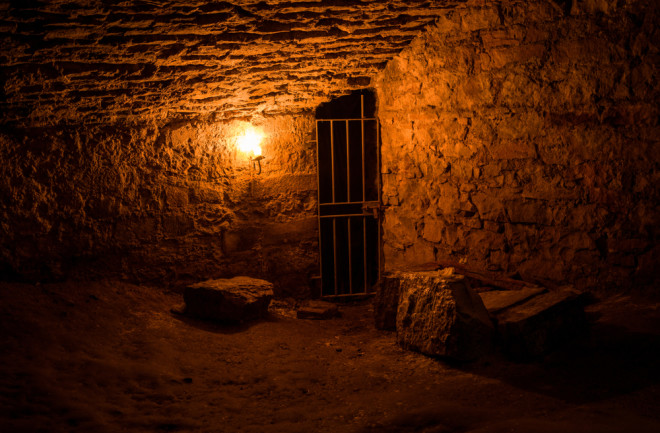
If you've ever traveled somewhere new, there's a good chance you've planned your itinerary around popular destinations to make the most of your trip. That’s why famous museums, parks, restaurants and beaches are commonly filled with people trying to experience what makes a particular location so great. But some of us have a penchant for places that are historically associated with death and tragedy. All around the world, these tourists visit concentration camps, historical grounds of famous battles or even places related to mass atrocities.
Today, this practice — fittingly called "dark tourism" — is a multi-billion dollar industry. But it's also far from a new phenomenon. Some people have always been drawn to death, and two of the earliest examples are the displays of public executions and the Roman gladiatorial games. The Colosseum in Rome may very well be one of the first dark tourism attractions. But what is it about these locations that make them so engaging? According to experts, there are plenty of factors that help draw us to these lurid locales.
The Appeal of Death and Tragedy
The motivations of tourists in visiting dark tourist locations often come down to four common themes, according to a 2021 study published in International Hospitality Review . Curiosity appears to be the biggest factor, but personal connection also matters. Many tourists take part because they feel connected — or want to feel a connection — to the events that transpired at a particular location, says Heather Lewis, assistant professor at Troy University who was involved in the 2021 study.
Others visit for educational purposes, while some just happen to be in the same place and decide to participate after seeing something that might be of interest, she adds. For some people, visiting the graves of celebrities they like is a way to celebrate their lives, and it’s not about focusing on the difficulty of their life, or the tragic circumstances behind their death.
“Dark tourism does not need 'dark' tourists — only people who are socially engaged in the cultural and political fabric of their own life world,” says Philip Stone, executive director of the Institute for Dark Tourism Research. “[It] is the commodification of places of pain and shame and, consequently, shines a mirror on contemporary society of how we memorialize, and who we remember.”
The concept of dark tourism is culturally nuanced and means different things to different people. It can mediate our sense of mortality through the fatality of others where the dead act as warnings from the history of our own fights, follies, and misfortunes, says Stone. In short, a fascination with death in itself might not be the primary motive for visiting dark tourism sites; it likely has more to do with an individual's interest in cultural heritage and education.
A Complex Legacy
Still, despite that nuance, dark tourism is often frowned upon. For tourists and travelers, it can seem like a minefield mired in “ moral ambiguities and managerial dilemmas,” says Stone. In many ways, the industry is all about managing our collective memory and providing a memorialized afterlife to those who died tragically or untimely. At the same time, it allows contemporary visitors to consume narratives of death that have been streamlined for their consumption. In other words, the practice can be considered a "touristification" of the places and people steeped in death and tragedy.
“Remembrance is a political process that is selective of what, who, and where is memorialized — and, perhaps more importantly, forgotten,” he adds. “As such, dark tourism showcases our significant dead as spectacular in a society of spectacle where commercialism ensures everything is 'packaged up' and sold, even tragic or calamitous death.” At its core, there is an element of dark tourism that knowingly exploits our fascination with the macabre, stirring up complicated ethical and moral issues about our own behavior.
For Lewis, dark tourism isn’t necessarily a bad thing as long as it’s properly managed. The increase in tourism can be used to restore or maintain facilities in dark tourism locations, but it should not destroy or diminish the integrity of the location over time. For instance, there are Hurricane Katrina tours that will not visit certain parts of the city out of respect for the individuals living there, she adds.
People must always be respectful of those who have experienced loss and hardship at dark tourism locations. Traveling responsibly and minimizing its impact on residents remain highly important because old suffering may be reopened, intensified, and prolonged by tourists.
“The overall concern that we should have with dark tourism is making sure that we are being ethically and morally upright in the marketing and use of these locations as a dark tourism destinations,” says Lewis. “We should never seek economic gain by exploiting others’ suffering and loss.”
- behavior & society
Already a subscriber?
Register or Log In

Keep reading for as low as $1.99!
Sign up for our weekly science updates.
Save up to 40% off the cover price when you subscribe to Discover magazine.

20 Unique Dark Tourism Sites Around The World
Disclosure: Advertising and affiliate services, including Amazon Associates, help the cost of running my blog. Clicking ads or making purchases through affiliate links may, at no additional cost to you, earn me a small commission. I appreciate your support .

One of the most unique tourism trends in recent years might have to be the fascination with so-called dark tourism sites. There’s always been a curiosity when it comes to places that might have a historic connection with tragic events. But while there are many reasons for people wanting to visit such sites, dark tourism is not a bad thing.
You might argue that visiting these dark tourism sites is a way of preserving the past. Or making sure the same horrific things don’t happen again . And while you might get some mixed reactions from people about your travel plans, they are fascinating places. And I believe they are places that the world should know about.
Disclaimer: The following article has travel suggestions in both Russia and Ukraine, however was written before the current events unfolded. I have chosen to leave them in this article in the spirit of the original topic covered here, however I am in no way recommending visiting either Russia or Ukraine at this time . Please check current travel conditions for any country you plan on visiting and travel safely.
What is Dark Tourism?
Dark tourism sites are places which we can associate with death, destruction or some kind of disaster. While some might see them as morbid, you’d be surprised at how many places you’ve visited with such connotations. For example, have you ever been to the Tower of London? Full of torture chambers and stories of gruesome events. What about the Colosseum in Rome? The deadly gladiator events here were some of the most bloody spectator sports in history.
We think of them as historical sites in a way we don’t think of some of the following places in the same way. Is it because that was so long ago? Does the length of time before we start exploring these sites really make a difference in how our visiting them should be perceived?
How should I behave at dark tourism sites?

Societal rules about museums are ingrained in us from an early age. But a lot of people worry about what to do while visiting somewhere with such a dark past. How do you behave? What if you do the wrong thing?
Respect is key . Remember that these sites, while open for you to enjoy, learn and experience, are the sites of some pretty bad and horrific things . Be aware of those around you as you never know if they might have a connection to where you are.
While it’s unfair to say you shouldn’t talk or show enthusiasm, use common sense and read the room . A concentration camp is nowhere to be giggling with your friends, a memorial park is not somewhere to be shouting…you get the idea.
Unique Dark Tourism Sites To Visit
Whether you’re a big history buff or just curious in anything a little macabre, these are some dark tourism sites around the world you likely don’t want to miss. From recent tragic events to centuries-old historical happenings, you can’t deny how incredibly interesting these places are.
Alcatraz Prison – San Francisco, USA

Possibly one of the most eerie and fascinating dark tourism sites you will ever visit is Alcatraz . A prison so notorious that it still receives millions of visitors a year. Located on an island in San Francisco ‘s bay area, you now get to experience seeing it from the inside like a prisoner. So close to land but so far away.
The only way to reach Alcatraz island is by a pre-booked boat tour . The tour is popular and often sells out months in advance. There are no food or drinks allowed except at the boat dock area, so plan your day accordingly. You also have a steep walk to the prison at the top of the hill, but there are motorized vehicle transfers for those with mobility issues.
Explore the prison and the grounds with an impeccably narrated audio tour by former guards and inmates. You’ll be led through cells, the recreation areas, the kitchen and more. Learn about the riots, the escapes and the deaths that happened here, and the most famous prisoners to ever call Alcatraz home.
Gravensteen Castle – Ghent, Belgium
Contributed by Cecilie from Worldwide Walkers

Gravensteen Castle in Ghent is a classic example of dark tourism sites in Europe. The castle was built back in 1180 and housed the Count of Flanders for many centuries until it became a court, a prison, and even a cotton factory.
It’s the dark horror stories of torture that really attract visitors to Gravensteen castle. While visiting, you’ll walk through torture rooms and see all the different tools used to punish criminals back in the Middle Ages.
Many people have died within the castle walls in the most horrific ways, which creates a dark haunted feeling to the place. It’s this uncomfortable feeling that leaves you both intrigued and distressed after your visit.
While it might sound very disturbing, the free audio guide does a wonderful job carrying out all the stories in an interesting way with respect to history. It’s a great place to learn about the history of Belgium’s city Ghent . You can even get one of the greatest city views from the castle roof.
Silver Mines – Potosi, Bolivia
Contributed by Deb from The Visa Project

While there are many landmarks to see in Potosi , a unique attraction is to visit one of these working mines. A guided tour let’s you witness the working conditions of the miners.
If you live in Bolivia , you would come across many extreme tourist offerings but this one would probably be one of the darkest. The Cerro Rico mountains silver mines made Potosi a major economic center of the Spanish empire back in the colonial times.
Mining is more or less still done in 18th century style – using old tools, hand and dynamite. No modern safety equipment or protocols. Although you would be introduced to El Diablo, the mountain’s devil-god to who the miners offer cigarettes, liquor as well as blood of an animal slaughtered on the spot for their protection. Child labor is pretty common and you can buy dynamite in the local market!
You will be advised to chew on coca leaves to help with breathlessness if taking a tour through the mines . The miners work in really harsh and dangerous conditions and many get lung diseases afterwards. If you visit, definitely leave a generous tip for the miners.
Port Arthur Penal Colony – Tasmania, Australia
Contributed by Mark from Wyld Family Travel

Port Arthur lies at the bottom of the world in southern Tasmania Australia . Port Arthur was a British penal colony set up in Australia, designed to break prisoners both mentally and physically. To be sent here from England was being sent as far away from your home as possible.
The youngest prisoner was 11 years old and around 70,000 prisoners called Port Arthur home. Prisoners at Port Arthur endured harsh working gangs that built much of Tasmania. The Asylum at the site pays testament to the mental torture these convicts were put through with many slowly losing their minds. Prisoners were regularly flogged to break them into submission.
Port Arthur prison was opened 20 years from 1833-1853 and 7,000 convicts died there. In modern times Port Arthur is also the location for the largest mass shooting in Australian history. This was the catalyst for the strict gun rules Australia lives by now.
Port Arthur is today one of the most interesting places to visit when in Tasmania. The prison site has been preserved with original building and tours explaining the history of the location.
Museum of the Occupation of Latvia – Riga, Latvia

As a former Soviet occupied country, Latvia still has many historic sites linked to the KGB. One of the most interesting activities you can do in Riga is visit the Corner House. This was the old headquarters of the Soviet KGB in Latvia.
True KGB style, if you didn’t know this museum existed you might not be able to find it. A inconspicuous doorway leads into a building straight out of the 50s. Here you can find out about the KGB in the city at that time.
The museum is free or you can pay 10 EUR for a guided tour. The tour might be worth it to see parts of the museum you wouldn’t otherwise get to. Walk through the rooms where the KGB worked and to areas of the building where the prisoners would have been taken.
The storyboards depict historical stories of the KGB in Riga, Latvia , and the “criminals” they arrested, tortured and killed here. This is really one of the most unique dark tourism sites in the Baltic states.
Jallianwala Bagh Memorial Park – India
Contributed by Neha from Travelmelodies

Etched in the history of India as a dark moment, is the incident of Jallianwala Bagh. Located in the holy city of Amritsar in Punjab, it remains one of the most popular places to visit in Amritsar . Jallianwala Bagh is a memorial park in the honor the people that were wounded and lost lives on the fateful day of 13 April, 1919.
Back in 1919, India was under the rule of British and the people of India were protesting for Independence. Over a thousand people had gathered in the Jallianwala park on the festive day of Baisakhi to silently protest the arrest of few national leaders. But General Dyer opened fire unannounced on these people killing and injuring many.
The Jallianwala Bagh now houses a museum with pictures and documents related to the event and some memorial structures in honor of the martyrs. There is a ‘Martyrs Well’ in which some people jumped to save themselves from the bullets. There’s even a wall with bullet markings on it.
Every evening there is a light and sound show that throws light on the unfolding of the event. It is a must visit place and is located next to the Golden temple.
Gori, Georgia
Contributed by Emily from Wander-Lush

The small city of Gori,Georgia has a rather dark claim to fame. It’s the birthplace of Ioseb Jughashvili, better known as former Soviet dictator Joseph Stalin.
An easy day trip from Tbilisi , Gori has become one of the most-visited places in Georgia because of its Stalin connection. The main attraction is the Stalin State Museum, a grandiose sandstone building in the center of the city.
In the yard is one of few remaining Stalin statues still standing in Georgia today. Also the small wooden house where Stalin was born in 1878, and the armored railway carriage he used to travel around the USSR.
The museum opened in 1957 and exhibits remain much the same – that is to say, very Soviet-style. It has a very selective curatorial approach with most artefacts relating to Stalin’s early years and some pretty glaring gaps. With limited information in English it’s recommended to take the guided tour for a few extra dollars.
Visiting the museum is a totally bizarre experience, but it gives an interesting insight into how Stalin’s memory is treated in Georgia today. Some people in Gori (and elsewhere in Georgia) still venerate the dictator, but the younger generations less so.
There are plenty of things to do in Gori that have nothing to do with Stalin. The magnificent Gori Castle, the old town, and the hilltop Gori Jvari church. It’s these attractions that most residents would prefer you remember Gori for.
Tham Piew Cave – Laos
Contributed by Marie from A Life Without Borders

Laos holds the unfortunate title of the most heavily bombed country on Earth. It bore the brunt of clandestine bombing campaigns waged by the USA on Laos during the 1960s and 1970s. Phonsavan in the province of Xieng Khouang, was particularly decimated. In fact, unexploded ordnance still affects local communities to this day.
Many visitors to the region enjoy Phonsavan’s major tourist sights such as the UNESCO site Plain of Jars. But few venture off the beaten track to discover the site of one of the worst days in Lao history.
On 24 November 1968, just one single missile fired from a US fighter plane killing 374 innocent villagers taking refuge in Tham Piew Cave. Just 60 kilometers from Phonsavan city, the cave is a somber and emotional place to visit. But it is important in the turbulent history of Laos, even if little known throughout the rest of the world.
The site’s information center holds extremely confronting photographs of the immediate aftermath of that fateful day, together with the history of the Secret War in Laos. A moving statue of a man carrying a lifeless child marks the entrance to the memorial park. Walk through a peaceful forest to the mouth of the charred cave. Here visitors can leave offerings of incense at the small shrine for those who perished within.
Chernobyl Exclusion Zone, Ukraine
Contributed by Kami from My Wanderlust

The Chernobyl Exclusion Zone is a well-known place all over the world. On April 26th, 1986 the biggest nuclear disaster in the world took place here, changing people’s lives forever. As a result of the catastrophe, the whole area around the power plant became a closed zone. Inhabitants of numerous towns and villages had to move away.
Today you can visit the Exclusion Zone but you need to do it with an official Chernobyl tour . There are plenty of them departing from Kyiv daily and you can choose between day trips and multiday tours. Now, all these years after the disaster the area is safe to visit and the radiation is low.

During your trip, you will see numerous places in the zone, including the power plant itself. But the biggest highlight is the abandoned town of Pripyat. When the disaster happened it was one of the most modern cities in the former USSR, but now nature has taken over the place.
Keep in mind that even if the Chernobyl zone is a very touristy and popular place, it is also a place of great tragedy. Make sure to visit the place with respect and follow your guide’s instructions. Still, this is a fascinating place to visit and everyone visiting Ukraine should include a Chernobyl tour in their itinerary .
Catacombs – Paris, France
Contributed by Debbie from World Adventurists

Even the City of Light and Love has a dark history. One of the most fascinating places to visit is the Catacombs of Paris . The Catacombs have a sad history, full of bones of the unknown. In the 17th century, Paris cemeteries were overflowing so badly that there was no longer space to properly bury their dead. Overflowing graves led to the solution of using the underground tunnels to house the bones.
Approximately six million people have been laid to rest underground. Today the bones are neatly stacked, including some designs made from the bones. At some points there are femurs arranged from the floor almost to the ceiling, with rows of skulls in between, or formed into shapes like a cross.
Visiting the Catacombs, it will make you really wonder what their lives were like back then, who they were, and the cause of each death. It is very humbling.
The Catacombs of Paris are extremely popular. It is more expensive, but to skip the line, you will want to buy your ticket in advance . It can also get chilly down there, so bring a light sweater with you. Allow for at least an hour and a half to wander the Catacombs once you are inside.
Lenin Mausoleum – Moscow, Russia
Contributed by De Wet & Jin, Museum of Wander

In the center of the Red Square in Moscow is a somewhat inconspicuous structure which reminds somewhat of a pyramid. But the long line of Russians and tourists is a giveaway that it is one of the most popular things to do in Moscow .
Inside this step pyramid is where the embalmed body of Vladimir Lenin is on display. Everyone is welcome to visit and pay their respects, or simply come and look at the former Soviet leader for bragging rights.
Visitors to Lenin’s Mausoleum visitors are first searched by military personnel, and bags (and cameras) have to be deposited. There are also a few strictly enforced rules while inside the mausoleum: no talking, hands out of your pockets, no hats and the line must keep moving at all times. Disobey, and a Russian soldier will reprimand you.

The atmosphere as well as the temperature inside the mausoleum is chilling. The line moves quite slowly, so you’ll get a good look at Lenin’s body, which has been on display here for almost a hundred years.
The mausoleum is free to enter and open on Tuesdays, Wednesdays, Thursdays, and Saturdays from 10:00–13:00. Behind the mausoleum is the gravesite of former Soviet ruler, Joseph Stalin, another interesting place to see.
Tianenmen Square – Beijing, China

Dark tourism sites don’t come more secretive than that of one of the world’s biggest massacres in recent history. Tianenmen Square, the public square in China’s capital, Beijing . While most visitors to China will have heard of the Tianenmen Square Massacre, the event is so censored within China that many people don’t know the full extent of it.
In 1989 students led a 6 week long protest after the death of a pro-reform official from the Communist Party of China. The fear was that the country would fall into economic decline and that the corruption in place would become worse. As the protests continued the military were brought in and things quickly got out of hand.
There are varying reports of anywhere from 300-3000 deaths of the tens of thousands of people who protested. While the square is peaceful now, there is always a high security presence as well as airport-style check points.
The square is used for many important national celebrations and Chairman Mao Zedong announced the founding of the People’s Republic of China here in 1949. His embalmed body is now on display in a mausoleum there.
Other than that there’s not a lot happening in the square now. However, the Imperial Palace (also known as the Forbidden City) is across from Tianenmen and is an impressive place to visit.
Bodie ghost town, California USA
Contributed by Olivia from Girl With Blue Sails

Bodie State Historic Park, once a booming California gold town, is now a notorious ghost town. It sits in a memorialized state of “arrested decay” with dilapidated buildings preserved in their state of abandonment from the late 1800’s. Walking down the dusty, dirt roads of Bodie invokes a bit of a dark appreciation and wonder about what happened to the people that lived here.
Visitors can walk through the main streets of the town, seeing the various houses, stores, and saloons. Canned goods still on store shelves, original newspapers in the buildings, and old wooden pews still in the church. There are old forgotten cars in the grass, rusting and being overgrown by nature.
Bodie is most popular with history buffs, photographers, and those who love to visit dark tourism sites. Plan your trip to Bodie in the morning to avoid the peak desert heat. While walking through Bodie can be a grim experience, it also provides a unique and realistic glimpse of 1800s California mining life.
Choeung Ek Killing Fields – Phnom Penh, Cambodia
Contributed by Tasha Amy from Backpackers Wanderlust

The Killing Fields, also known as Choeung Ek Geocidal Centre, is located just a short 17 kilometer journey from Phnom Penh city center . This closeness is important considering the horrible events which occurred here between 1975 and 1979.
During this period, Cambodia was run by the Khmer Rouge Regime communist party who arrested and executed anyone they saw as a threat. This included people with education, opposing beliefs, or anyone who stood up for what was right.
Quite a few foreigners even got executed after accidentally stumbling upon Cambodia during this period. Children were trained as soldiers and those who were disobedient were killed. For a greater understanding of life under the direction of the Khmer Rouge and Pol Pot watch the film First They Killed My Father .
The Killing Fields outside of Phnom Penh is just one of many locations across the country. Though this one is the most known due to the fact of the horrible acts performed here.
You can book a tour or visit by tuk tuk. The tuk tuk ride for the day should cost you around $12.00. Once at the Killing Fields make sure you hire the audio guide for the stories of those who lived through these events.
Nazi Rally Grounds – Nuremberg, Germany
Contributed by LeAnna from Wander In Germany

It’s no secret that Germany is riddled with a dark, difficult, and oppressing past. However, decades after WWII, the country does a phenomenal job of walking the fine line between erasing the atrocities and showing respect as well as raising awareness of exactly just what happened.
One such place is the unfinished Nazi Rally Grounds in Nuremberg . These huge grounds were Hitler’s vision for an enormous epi-center and headquarters for the Third Reich.
Walking around the lake at the site, it’s almost easy to not realize exactly what you are standing on. However, on the grounds is the Nazi Dokumentation Zentrum. Here you can see all the blueprints and plans for the grand scheme Hitler envisioned. It makes walking the grounds that much more realistic.
The museum does an exceptional job of showing exactly how a man with such polarizing, disgusting, racist views could enchant not only an entire nation, but take over much of Europe.
While in Germany, doing any sort of Nazi salute or tribute in public is illegal. Therefore, this site is not flocked to by Neo Nazis, but instead is seen as a place of learning from the past.
Guanajuato Mummy Museum – Mexico
Contributed by Shelley from Travel Mexico Solo

The Museo de las Momias (Museum of the Mummies) is one of the most popular places to visit, and best things to do in Guanajuato City, Mexico .
One of the most famous of Mexico’s dark tourism sites has about 100 mummified human bodies on display, in both glass cases and in the open. Most of the bodies are from older adults, but the museum also claims to have the “world’s smallest mummy” of an approximately nine-month-old child.
While not for everyone, it is the most visited place in Guanajuato City . When visiting, you’ll notice Mexican families with children of all ages. In Mexico, death is a much less taboo subject than in other countries — evidenced by annual festivals like Día de Muretos (Day of the Dead).
The story of the mummies is as fascinating (and bizarre) as seeing them in person. Between 1865-1958, Guanajuato’s government decided to start collecting a “grave tax” on buried bodies. If left unpaid by the living relatives for three years, the body was exhumed.
Located in arid Central Mexico, Guanajuato has extremely dry soil and the bodies came out of the ground incredibly well preserved. When the government ended the grave tax in 1958, they had so many mummified bodies that they created this museum.
House of Terror – Budapest, Hungary
Contributed by Marco from Nomadic Fire

Budapest is popular with both tourists and expats for stunning architecture, gorgeous scenery along the Danube river, and affordable cost of living . The city is also home to the infamous museum: the House of Terror.
This museum juxtaposes two of the cruelest regimes of the 20th century: Nazi Germany and Soviet Russia. Fittingly located in a building that was once the headquarters of both the Nazi and Communist secret police, the museum is an important reminder of both the crimes perpetrated by those regimes and their victims’ courage and resistance.
Stepping into the House of Terror transports visitors back to a terrifying time in Europe’s history. The museum’s artifacts include personal items confiscated by the secret police. It also tells stories such as a family’s desperate attempt to hide a young boy and baby girl from the Nazis during the Holocaust. Although now a museum, many rooms remain exactly as they were when the headquarters were operational. This includes prison cells, rooms filled with torture devices, and a guillotine scale model.
You can spend anywhere from 45 minutes to a few hours wandering around this well-curated museum. Through exhibits of movie posters, photos, and re-created scenes.
9/11 Memorial and Museum – New York City, USA

One of the most emotional activities on a trip to New York is visiting the 9/11 museum. Built below the original location of the Twin Towers, the World Trade Center site of the 2001 disaster. Entering the museum from the street level, you descend past the twisted metal remains of the massive steel beams that once held the tower up.
The museum is a somber place which stirs up a lot of raw feelings from anyone who visits. It guides you on a journey from the history of the WTC towers to a timeline of the events of that morning.
With witness testimonials, photographs and messages left by those who didn’t make it, the museum is very hard to experience. But the exhibits also talk about what has happened since, what they have learned and why this site is so important. Outdoors, the footprints of the original towers have now been turned into two giant pools. The name of every single victim is engraved around them.
Did you know that white roses are placed at the name of any victim whose birthday it would have been that day? As dark tourism sites go, this one is especially somber given how recently the event took place. But it’s well worth a visit if you’re in New York .
Imperial Crypt – Vienna, Austria
Contributed by Martina & Jürgen from PlacesofJuma

A really cool spot and interesting dark tourism site not to be missed on any visit to Vienna is the Imperial Crypt. It is a real insider tip among Vienna’s best attractions and a visit is an eerie experience.
The Imperial Crypt is the final resting place of many of the most famous Habsburgs from Europe. Hidden under the Capuchin Church, it can be visited on a guided tour daily from 10:00 to 18:00.
The crypt is the final resting place of 150 members of the Habsburgs. Among the most famous are Emperor Franz Joseph I, Empress Sisi and Crown Prince Rudolf and Maria Theresa. Walking through the ten dark rooms of the imperial crypt, you travel through a 400-year-long stylistic epoch. You’ll see richly decorated coffins are sometimes even adorned with skulls.
The Habsburgs were preoccupied with their death and therefore had the sarcophagus made according to their wishes. Why not take a tour where you will get lots of information about the funeral rituals?
Auschwitz Concentration Camp – Poland
Contributed by Sean from LivingOutLau

Auschwitz is arguably one of the most tragic sites in the entire world. It was the largest of many German Nazi concentration camp and extermination center in World War II. Over 1.1 million men, women, and children, mostly Jews, lost their lives here. The collective genocide of WWII, known as the Holocaust, is one of the most horrific events in human history.
The Auschwitz-Birkenau Memorial and Museum is now a site where visitors can learn more about how the events unfolded, living conditions, defenses that were set up to prevent the captives from escaping and more.

Auschwitz is more than just a popular attraction in Poland; it is a place where visitors can understand human nature. Auschwitz is the standing testimony of the terror that humans can do to each other. It warns out what happens when an ethnic group is dehumanized. A visit to Auschwitz is solemn and eye-opening.
The best way to visit Auschwitz is to take a tour from Krakow , the nearest touristy city from Auschwitz. As part of your Krakow itinerary , don’t forget to book your tour as early as possible. There are multiple languages you can choose to have the tour in and the English-speaking tours are always the first ones to run out!
Visiting popular dark tourism sites
There’s no denying that visiting many of these dark tourism sites around the world is uncomfortable. The atrocities that happened there or the stories they tell are often unfathomable. But dark tourism sites are just as important as any museum or regular attraction.
Whether or not you want to visit any (or all) of the sites on this post, you have to agree that they are truly fascinating. As long as you have good reasons for wanting to visit, and a respectful attitude towards them you will be welcomed.
If you’ve enjoyed reading this post leave a comment or share using the social media buttons below. Which of these dark tourism sites are you most interested in visiting to learn more about?

Share this:
- Share on Tumblr

37 thoughts on “20 Unique Dark Tourism Sites Around The World”
I really appreciate this post and how you emphasized that respect is key. I so agree! I think visiting these places can be very powerful and very educational. I’ve visited four on this list, as well as a few others not mentioned, and am so grateful for those experiences to learn more and witness humanity’s dark history.
Absolutely love the unique concept of this post. I especially appreciated how you included the section on mindfulness and respect. Hope to pay many of these places a visit.
this was a great post… and while these sites aren’t for everyone, i think it’s important to connect with ‘dark’ parts of the past, so we don’t repeat those same mistakes.
It is very rare to come across such posts. I absolutely loved the concept. Keep up the awesome work.
This is such an interesting guide! I have been to a few of these places and I’ve also visited some older prisons around the world that have a dark past to them. I definitely have to visit some of these in the future. Especially the ones in Europe!
This is one of the most unique posts I’ve seen in a while! I honestly haven’t been to most of the places on this list, but I’m bookmarking it for later.
I have visited a number if these sites but never heard of the them, ‘dark tourism’ before. I can understand how the term has come about. I always leave these sites very reflective. There’s no denying they have an enormous impact on me. I have pinned the post because, in my opinion, ‘dark tourisn’ is an important aspect of world travel.
I have been to a few of them and wrote about the profound realizations I went through. Thanks for sharing a thought-provoking post.
I love how you mentioned the importance of respect when visiting these places. These places really make you think! It’s important to not forget the ‘dark’ parts of history so it doesn’t happen again.
I definitely find places that would class as ‘dark tourism’ interesting. Although to be fair, we very rarely remember the ‘good’ and ‘peaceful parts of history so I think most places could be considered ‘dark’ in one way or another! I’ve only visited Alcatraz from the places on this list but it was definitely a fascinating place and I’d love to go back. I’d like to visit the catacombs in Paris too. There’s also a lot on this list that I haven’t heard of before but I’d definitely love to check them out. Thanks for the great guide!
This list is very important given the history of these places! It’s also interesting to note the different feelings at each of them. I haven’t been to every single one, but Auschwitz, Alcatraz, 9/11, the House of Terror, Catacombs, and Gravensteen Castle (wow, I didn’t realize how many I had been to) but all of them were so uniquely dark. I think Auschwitz was my most striking and moving, though.
This is such an interesting post. It’s so heartbreaking to read through some of the dark things that have happened around the world. I believe it’s important that we visit these places to pay our respects and remember the people whose lives were drastically impacted by these places. I appreciated how you emphasized the importance of showing respect at these places. Thank you for sharing this post!
You can learn so much at these dark tourism sites. The 911 memorial has moved me to tears. I’m not sure I could visit the mummy museum.
I’ve been to Alcatraz and the Catacombs, but it was interesting to discover some new ideas from this list. And yes, mindfulness and respect are so important, particularly for several entries on the list.
As a historian I’m interested in visiting these sites, although we’ve skipped them the last years, since we found our son to young for them. I’ve been to 2 of the sites mentioned.
What a great list of dark tourism places to visit! I’ve been to many of these such as Alcatraz, Bodie, Ghent and 9/11 memorial. I’d love to visit Chernobyl and the catacombs in Paris.
What an interesting article and list of places to visit. I’ve visited a few on this list and I agree with you, visiting these places can be very educational, but we need to be respectful.
What a great post. Yes, I have been to a few of these dark tourist sites and am now adding a few more to my bucket list.
What an utterly informative and sobering post. I visited the Killing Fields in Cambodia back in 2013 but today still hold it so close to my heart.
Lenin’s Mausoleum was a surreal experience to say the least. No stopping, no taking photos, only getting a quick glance at Lenin before being ushered out. Auschwitz was another one that was really eye opening for me and a unique although sad experience.
What a fascinating post! I have never visited any of those sites other than the World Trade Center site in NYC. I would be interested in seeing several of them. sites like that are so educational and bring history to the forefront.
Thank you for this important post. I think sites of dark tourism are important for exposing atrocities of the past for many reasons. They allow us to pay tribute to those who have suffered, but more importantly, hopefully they instil in visitors the importance of playing a role in ensuring that history isn’t repeated.
I’m not sure that ‘penal tourism’ (sites such as Alcatraz and Eastern State Penitentiary) need to be included in the category of ‘dark tourism.’ My visits to S-21 and Cheoung Ek in Cambodia can’t be equated to the failings of a penal system. My visits to the Anne Frank House in Amsterdam, Dachau in Germany, or Auschwitz in Poland can’t be compared to Alcatraz.
‘Dark tourism’ and ‘penal tourism’ are important, but… separate.
Thank you for bringing attention to this issue.
that’s a fair point, and I’m in no way comparing one of these places to another, but understand that many people also have different levels of comfort in where they might want to visit so wanted to include a wide range of places. There are certain sites (like the ones you mentioned) that are always going to be the worst of the worst with regards to history. Thanks for reading
Very cool article! Haven’t seen many like this one. I’m actually in Tasmania right now!!
I have not done a lot of tourist type things alone, but one was Alcatraz. Fascinating experience walking that prison by myself and the audio tour.
I love this! I really want to try dark tourism after I saw “Dark Tourist” on Netflix! I totally agree with you, visiting these sites is very educational and an eye opener. And yes, respect is the key. It applies to everywhere we go! I will definitely save this for my future travels! 🙂
This is an interesting list. We’ve visited some already – like the catacombs in Paris. And some – like Tschernobyl are on our bucketlist!
Great compilation! There are so many places to go for dark tourism. And I know I can’t brave to most of them. I guess I can do it with museums. Opss how I missed the Crypt museum in Vienna!
What an interesting and informative article. I’ve been to a few of these sites, as well as a few more that didn’t make your list. I think that travelling is learning- and it’s important to visit places such as these to honour, respect and learn from our past.
In a way, I am really into some aspects of dark tourism, I love things that are creepy or have a ghost story behind it. I did find a few spots on this list that interest me such as the castle in Belgium. Looks beautiful and with an interesting story!
Dark tourism is no doubt not everyone’s cuppa tea. Travel ushers understanding and these sites may serve as monuments that will remind humanity about life itself and not taking the same dark path twice.
Great post Emma, I love visiting places like these (or, in some cases, “love” would definitely not be the appropriate word, but I think they’re important to visit). The hardest place I’ve ever visited is the Killing Fields in Cambodia. Horrendous. The genocide museum in Sarajevo in Bosnia was hard-hitting too. I’d be really interested to visit that KGB museum in Latvia!
Very good topic and original. i agree in most of the places listed, indeed most of them are scenario of some of the darkest moments of humanitty. I have only one thing that I don’t understand by you choose to put Lenin Mausoleum? Independently of the personal believes of rach one, Lenin led the biggest and most sucessul revolution in history . Poeple can like it more or less but I don’t how his resting place is part of dark tourist places….If would be Stalin inside ok, but this one i don’t get it. Great work overall, I am argentinian and I really appreciate that you brought-up the story of Potosi…. Well done! Looking forward for your next post!
Thanks for reading. For this one it’s also more about the fact that you can visit the body of Lenin and that it is on display as dark tourism is focused around often morbid places. There are a few countries that have former leaders on display – Ho Chi Minh in Vietnam, Chairman Mao in China – and I think the idea of visiting one of these places to see an embalmed body on display is a little dark in itself
Got your point! You know that is the same guy who embalmed Lenin and Ho Chi Minh? 😁
Great post! Especially seeing these are all easily accessible, no trespassing required. I have only been to a few, but I really recommend the Nuremberg Ralley Ground and the adjacent museum. Few people visit, and it is quite eerie. Also, the 1936 Olympic Village in Berlin which is similar architecture to Nuremberg rallye grounds, it was really abandoned a few years ago, I think more touristic now.
Have definitely been to a few dark tourist sites but Chernobyl has been on my list for ages now!
One of the most eye opening museums was the Anne Frank in Amsterdam but definitely want to keep visiting some new ones.
Leave a Reply Cancel reply
Your email address will not be published. Required fields are marked *
Notify me of follow-up comments by email.

- dark tourism
- Andaman & Nicobar
- Bosnia & Herzegovina
- Channel Islands
- Cyprus (North)
- Czech Republic
- Dominican Republic
- Easter Island
- El Salvador
- Falkland Islands
- French Guiana
- Great Britain
- [Nagorno-Karabakh]
- Netherlands
- New Zealand
- Northern Ireland
- North Korea
- Philippines
- South Africa
- South Georgia
- South Korea
- Switzerland
- Transnistria
- Tristan da Cunha
- Turkmenistan

- disclaimer & privacy policy
© dark-tourism.com, Peter Hohenhaus 2009-2024
You are using an outdated browser. Please upgrade your browser .
Moscow Travel Guide
- Guide to Russia
- Russian Destination Guide
Why travel to Moscow
Contrasts: 12th century monasteries and some of the tallest skyscrapers in Europe can be found side-by-side in this complex and captivating city. The diversity of this mega-city is astounding. Only a few steps away from the solemn red facade of the Kremlin and the sounds of righteous church bells, a buzzing night scene and alternative-fashion boutiques can be found.
Culture: In Moscow only the best goes. Be it a theatre, restaurant or gallery, the standards are certain to be world-class. The Bolshoi ballet company is reputed to be even better than the Mariinsky’s and “MMOMA” (Moscow’s museum of modern art) exhibits works of art as profound as any that could be found in the famed MOMA.
Convenience: Unlike the rest of Russia, it’s easy enough to get by with just English in Moscow and, driving excepted, it is surprisingly safe: the murder rate is lower than in some of America’s major cities.
Top Sights in Moscow

St. Basil’s
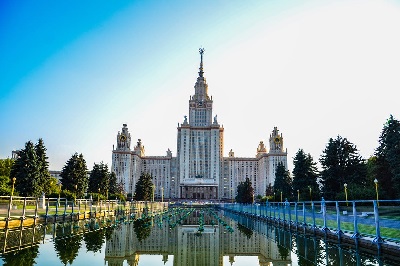
Novodevichy Convent
MORE SIGHTS
- Moscow Fact File
- History of Moscow Russia
- Arriving in Moscow
- Getting Around
- Moscow Museums
- Nightlife in Moscow
- Moscow Restaurants
- Moscow Entertainment
- Activities in Moscow
- Outside Moscow
FEATURED MOSCOW TOURS
See tours which enjoy highest popularity with our customers
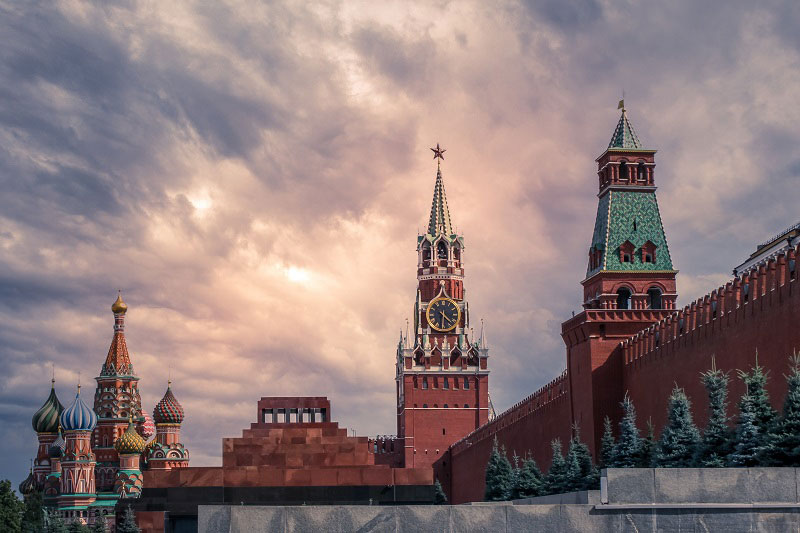
CLASSIC MOSCOW
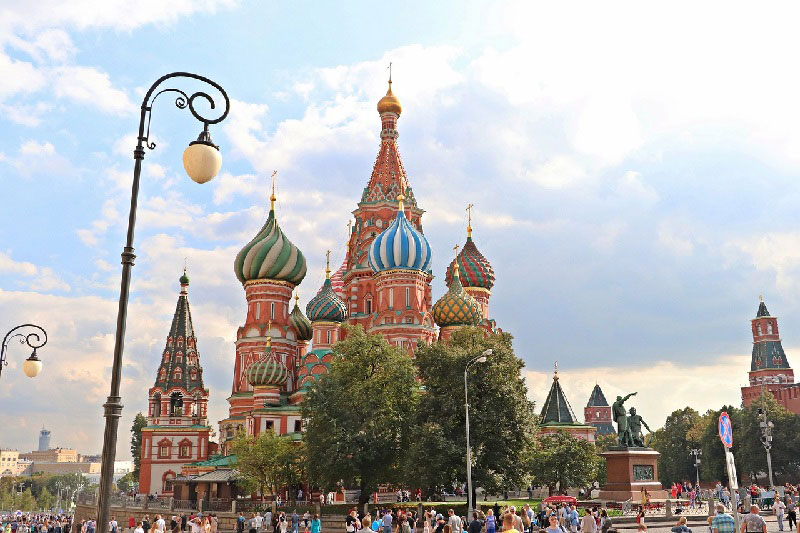
A WEEK IN MOSCOW
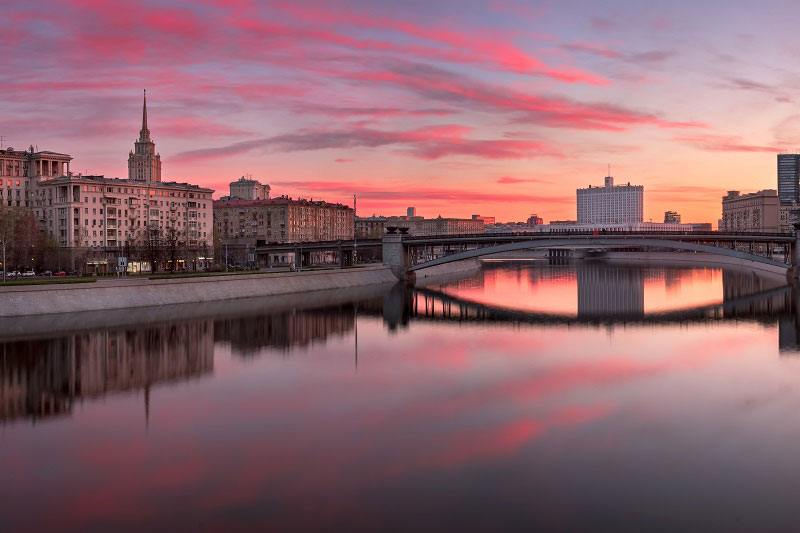
WEEKEND IN MOSCOW
View all tours
Why visit Moscow
It would take more than two days to walk around the perimeter of the biggest city in Europe, Moscow. Many of its inhabitants barely know what’s beyond the few blocks around their flat and there are so many attractions that it’s almost impossible to know where to start. If there is such a thing as an antidote to boredom, Moscow City is it. The mind-boggling range and diversity of things to do, places to eat, parks, historical monuments and more means that a vacation in Moscow has a wealth of activities to offer for every type of traveler, from young families to retirees.
Reasons to Vacation in Moscow in 2022
The Bolshoi theatre is familiar to almost everyone as Russia’s grandest theatre, but what people don’t know is that there are many more bolshoi (big) sites in Moscow that are worth travelling all the way to Moscow to see. For more than 100 years, the world’s biggest bell has been hidden behind the Kremlin’s walls and inside Moscow’s main park (which is bigger than some countries!) there is the world’s largest outdoor ice-rink. Travelers that visit Moscow can stay at the Izmailovo, Europe’s biggest hotel, then eat at the largest and most historic McDonald’s in Europe and after that have fun at the largest European indoor theme park!
Ancient Past & Stunning Architecture:
As those who travel to Moscow will see, just because Moscow is a city of record-breaking, glitzy high-rises doesn’t mean that there is no history. On the famous Arbat street, time-worn, wooden storehouses and century-old churches are squashed up against grey, soviet blocks which are then towered over by 21st century office-blocks. Unlike its much younger sibling, St Petersburg, Moscow’s roots stretch way back to the 12th century. Within the walls of the Kremlin, the city’s oldest building the Cathedral of Assumption can be admired in all its 500+ years of age.
Culture & Convenience
For a foreigner who has never visited Russia, Moscow is the perfect stepping stone into this great land of mystery. From the country’s best classical ballet troupes to snow-white troikas trotting through the parks, all the highlights of Russian culture can be had in Moscow without any of the complications that would be expected in other, less developed regions of Russia.
Cheap as Caviar
In Moscow, everything is bargain when with the current foreign exchange rates being what they are. Even caviar doesn’t seem so dear when the exchange rate is at 60rub to the dollar, so go on indulge yourself! Take your 2022 vacation in Moscow and have the best of both worlds, with European luxury at very affordable prices.

Lena, our guide in Moscow was excellent. She was very knowledgable and could answer any question we had for her. We liked that she could pick up on our interests and take us places we might not have thought of to go. When we realized that one of the places we had chosen to see would probably not be that interesting to us, she was able to arrange entry to the Diamond Fund and the Armoury for us. Riding the Metro with Lena was a real adventure and a lot of fun. In Saint Petersburg we found Anna well versed in the history of the Tsars and in the Hermitage collection. Arkady in Veliky Novgorod was a very good guide and answered all of our questions with ease. Novgorod was perhaps a long way to go for a day trip, but we did enjoy it. Vasily was a great driver to have and kept us safe with good humour and skill. We enjoyed ourselves so much, my daughter says she is already planning to return. We would both have no hesistation to recommend ExpresstoRussia to anyone we know.
Just wanted to let you know that My grandson Bruno and I couldn´t have been more pleased with our week in Moscow (6/15 - 6/21). We were absolutely enchanted with the whole experience, including getting lost a couple of times in the Metro during our free time. Although both our guides (both Eleanas) were excellent, I would particularly commend the first one (she took us to the Tatiakov, the KGB tour, and to that beautiful cemetery where so many great Russian artists, authors, composers, musicians, militarists, and politicians are buried). Her knowledge is encyclopedic; and her understanding of today´s Russia as a product of its past was, for us, truly enlightening. I will be taking another tour in Russia, with my wife, within the next two or three years. I will be in touch with you when the time comes. Meanwhile, I will refer you to other potential visitors to Russia as I meet them.
We had a great time both in Moscow and St Petersburg. Your travel agency was excellent in coordinating the whole trip. Everything worked like clockwork. The guides assigned to us were very nice and friendly. They had a great knowledge of their subjects. The cars and the drivers were great. The hotels were good and the itinerary was good. All in all, it was a wonderful experience. It was nice dealing with you and your company. Thank you very much for a great Russian experience. Have a great future ahead
- 31 reviews of Express to Russia Moscow Tours in Moscow
Our travel brands include

Express to Russia
Join us on Facebook
We invite you to become a fan of our company on Facebook and read Russian news and travel stories. To become a fan, click here .
Join our own Russian Travel, Culture and Literature Club on Facebook. The club was created to be a place for everyone with an interest in Russia to get to know each other and share experiences, stories, pictures and advice. To join our club, please follow this link .
We use cookies to improve your experience on our Website, and to facilitate providing you with services available through our Website. To opt out of non-essential cookies, please click here . By continuing to use our Website, you accept our use of cookies, the terms of our Privacy Policy and Terms of Service . I agree
The Rise of Dark Tourism
When war zones become travel destinations

EIN ZIVAN, Golan Heights—Kobi Marom squints into the morning sun and gestures at the rolling green hills beneath the Quneitra viewpoint, where the crumbled Syrian city of Quneitra juts up against the Syrian-Israeli border fence. Here, some of the fiercest fighting of the Syrian civil war has played out over the past year. And every time there has been a battle, there has also been a crowd.
“People come here every day to see the show,” says Marom, 54, a retired Israel Defense Forces colonel who now works in the tourism industry and regularly brings groups to this point to gaze down on Syria’s bloodletting. “For people visiting the area, it’s interesting. They feel that they are a part of it. They can go home and tell their friends, ‘I was on the border and I saw a battle.’”
High above a valley in the Israeli-occupied Golan Heights, Israeli tourists have a panoramic view of this strategically important location, which is also known as the Gateway to Damascus. Tour groups, fresh from jaunts to the area’s wineries, cherry markets, and artisanal chocolate shops, stop here by the dozens each day armed with binoculars and cameras, eager for a glimpse of smoke and even carnage.
In early June, Marom tells me, the viewpoint was especially packed, as news spread through the Golan Heights’ quiet farming communities that Syrian rebels had overrun Assad loyalists to take control of the United Nations checkpoint on the Israeli side of the border. The rebels held the checkpoint, which was once a humanitarian crossing between Israel and Syria, for a handful of hours, during which tanks barreled through air choked with mortar rounds and smoke. Safe beyond the buffer zone, hundreds of spectators sweated in the heat and gaped at the action below.
Mortar rounds have occasionally drawn Israel into the fighting, and on June 22 a cross-border missile attack killed a 14-year-old Israeli boy. But for the most part, the Golan remains sleepy and lush. When I visited just a few days before that strike, the air was clear and the UN tents at Quneitra flapped lazily in the breeze. The Quneitra checkpoint, which until the outbreak of the Syrian civil war was little more than a transit point for trucks of Druze-grown Golan apples bound for the Syrian market, was almost completely still.
“Sometimes we have battles in front of us and tourists will hear the noises and see the fighting, but that happens only once every few months,” says Marom. “I’ll have tourists sitting at a wonderful lunch one mile from the border, and I tell them that al-Qaeda is looking at them, and they go crazy with it. They say, ‘Are you sure?’ To them, it’s like something from the moon, and they want to see.”
Last week, as another Israeli border burst into flames and Israel launched an offensive against Hamas in the Gaza Strip, war spectatorship moved to a new front . In the Israeli border town of Sderot, a largely impoverished, immigrant-heavy enclave that has taken the brunt of Hamas rocket fire ever since Israel withdrew from Gaza in 2005, residents have set up plastic lawn chairs to applaud missile interceptions by the Iron Dome, Israel’s missile-defense system. Gazans too have cheered as missiles hurtle out of the strip and toward Israeli cities.
War tourism is nothing new; from Waterloo to Gettysburg, armies gathering on battlefields have long been trailed by packs of eager spectators. What is new, says Philip Stone, director of the Institute for Dark Tourism Research at the U.K.’s University of Central Lancashire, is the commercialization of it.
“This phenomenon has historical precedents. You can make an argument that with some of his very first tour groups, Thomas Cook took people to see hangings in Cornwall,” Stone says, referring to the founder of the eponymous travel agency and the public executions that were common in England in the 1700s and 1800s. “But what’s changing is how these trips are being formalized through the tourism industry, as well as the fact that technology and the Internet are also picking up on it.”
The Dark Tourism Institute was founded in 2012 to chronicle voyeurism at all sorts of macabre locations. Stone and his team have just launched a five-year project to examine the effects that war tourism has on cultural-heritage sites across the globe.
Fueled by travel documentaries such as Vice videos and Anthony Bourdain’s Parts Unknown , the broader adventure-tourism industry, which includes travel to war zones and political hotspots, has grown by an average of 65 percent annually over the past four years and is now estimated to be worth $263 billion . While some hyper-extreme tour operators, among them War Zone Tours and Wild Frontiers , have been around since the 1990s, the past decade has produced a bumper crop of plucky agencies catering to thrill-seeking wayfarers.
Take Untamed Borders , for example. James Wilcox and his business partner, Kausar Hussain, founded the outfit in 2006 and now offer treks to the mountains of Pakistan and the nomadic enclaves of Afghanistan, as well as excursions to the heart of tribal India and the most restive regions of the Caucasus. “We try to avoid the cliches,” the U.K.-based Wilcox says. “We try to show the people the culture of the countries they visit, to show them as multifaceted places.” Itineraries range between five days and two weeks, and cost between $2,500 and $6,000. They include sites like Pakistan’s Karakoram mountains, which to most Westerners only ring a bell because Abbottabad, the city where Osama bin Laden holed up for years, sits at their feet. The organization casts Afghanistan as a “new frontier for skiing and boarding”:
Nicholas Wood, a former New York Times foreign correspondent, had a similar desire after years of filing stories from the Balkans. So in 2009 he left journalism and launched the more cerebral Political Tours , which takes small groups of tourists to the world’s political hotspots. His trips take about a year to plan. “We work like a newspaper editor,” Wood, who is based in the U.K., explains. “We know how to put a tour together—we have all of these elements and it’s like building a story.”
Growth has been slow but steady, Wood says, with Political Tours now offering excursions to 15 destinations including Israel and the Palestinian Territories and post-financial crisis London. Their “ Libya: After the Revolution ” tour, for instance, costs $7,000 and includes visits to Muammar Qaddafi’s former compound and the notorious Abu Salim prison, along with face-to-face meetings with some of the militia members currently controlling the city of Misrata. Wood chalks up his success to a wider shakeup in the tourism industry, which has largely removed the need for travel agents and big tour operators while granting vacationers more freedom to customize their holidays. That means fewer classic, hit-all-the-tourist-traps vacations and more nuanced, unconventional getaways.
“People can travel by themselves so much more easily now, so if you’re going to be in the travel market, you have to bring added value,” Wood says.
For some adventure-seeking travelers, however, a guided tour just isn’t going to cut it. In the case of Ben Hadar, a California native now living in Tel Aviv, an itch for a quick vacation, coupled with rock-bottom airfare to Kiev, was all it took to get him to the center of the fiery anti-government protests that rocked that region in February.
“Rather than go through news stories, we wanted to just be on the ground and figure out what was going on for ourselves,” says Hadar, a broad-shouldered sales associate who plays running back in an amateur football league in his spare time.
Hadar and a friend, his football team’s cornerback, spoke with locals in Kiev’s Independence Square, watched the Super Bowl at a nearby bar, and even gave a Denver Broncos flag to a group of protesters in a tent city. The experience was thrilling. “There were people ready to die for what they believed in. It was so moving,” Hadar says.

This wasn’t Hadar’s first time jetting to the nerve center of an international crisis. In 2012, he visited Cairo, and against the urging of friends, walked to Tahrir Square to witness the election of Mohammed Morsi. For his next trip, Hadar says there is nowhere he’d rather visit than North Korea, which he calls “the ultimate mystery.”
Hadar is exactly the kind of customer that Chad O’Carroll, the founder of NK News and an executive at Uniquely.Travel , a new company hoping to specialize in information about the world’s most reclusive locales, is banking on. In April, Uniquely.Travel unveiled its first product: North Korea Travel , an app designed to help people navigate the Hermit Kingdom and understand its ethics, culture, history, and lesser-known tourist spots. O’Carroll visited North Korea three times between 2009 and 2012, after his interest was piqued by “ The Vice Guide to North Korea ,” a three-part series from the irreverent media outlet. Eventually, however, the government realized he was a journalist and banned him from entering the country.
“What mainstream media does in North Korea is just reinforce the extreme views of the country: the cult of the Kims, the nuclear weapons, the human-rights violations. And there is this whole gray area between all of it that doesn’t get reported on,” O’Carroll says.
Travel to North Korea, which can only be done via an organized tour and with the permission of the government, is a small but fast-growing market. Last year somewhere between 6,000 and 7,000 Westerners made the trip, nearly double the number that came in 2012, the London-based O’Carroll says. Tourism insiders are paying attention. “There’s been a huge growth in travel agencies specializing in North Korea. There were only a handful four or five years ago, and now there’s 30 or 40,” he says.
Yes, there are human-rights violations in North Korea, and yes, travel there does raise ethical questions, O’Carroll concedes. But he feels that staying away only exacerbates the problem. “It was isolation that created the very unique characteristics of North Korea,” he says. “And the advantages of tourism, as intangible as they may be, are worthwhile. If I hadn’t gone as a tourist to North Korea, I never would have set up my news website. So you have to think about not just the effect that travel has on North Koreans, but also on the tourists.”
Sometimes, that effect is therapeutic.
Macabit Abramson, a filmmaker from Jerusalem, had two children serving in the Israel Defense Forces in 2009 during Operation Cast Lead, the country’s 22-day military offensive in the Gaza Strip. With both her kids called up to fight, Israeli warplanes buzzing over Gaza, and Hamas rockets hurtling into Israel’s border communities, Abramson realized there was no way she could just sit at home.
“Whenever there is a war in Israel, it’s like you feel you are sick,” Abramson says. “And when you go to the border, it’s like you are fighting pathology with pathology. You go to the most extreme place in order to not be alone with your feelings. You really can’t be anywhere else but there.”
She took her camera and, along with another filmmaker, Avner Faingulernt, drove to the Gaza border. There, she met a motley crew of war-watchers who had gathered to see the fighting. Interviews with the spectators—who ranged from Haredi Jews (“I came to see how we bomb the Arabs”), to American immigrants (“It’s surreal … that suffering and living are happening like this at the same time”), to a swaggering macho man out for blood (“We should terminate them with full power”)—were integrated into her documentary, War Matador . The film offers a grim reminder that in Israel, war has a unifying effect. Only under fire would this strange cross-section of Israelis find themselves standing shoulder to shoulder.
That’s because dark tourism is characterized by its lack of boundaries, explains Philip Stone of the Dark Tourism Institute.
“There’s no such thing as a dark tourist, only people interested in the world around them,” he says. “You and I are probably dark tourists when we visit Ground Zero. We’re not dark tourists—we’re just interested in what happens in our lives.”
- Trip Planner
- Private Tours
- Small Group Tours
- Two Capitals
- City Breaks
- Trans-Siberian
- River Cruises
- Russia & Beyond
4-star edition of the private 9-day tour of the Russian capitals
5-star edition fo the private 9-day tour of Moscow & St. Petersburg
13-day in-depth discovery of Moscow, Kazan, and St. Petersburg
7-day tour designed to harness the best of the Venice of the North
11-day private discovery of Moscow, St. Petersburg, and the Golden Ring
Your Russia Getaway
Fill out the short trip survey to receive a personalized itinerary from a destination expert.
- Travel guide
- Before you go
- What to see
Russia Trip Planner
Learn about the dos and the don'ts for your amazing trip to Russia
- Our Partners
- Reservation Policies
Rated 9/10 on the Trustpilot review platform
- My itineraries
- Chat with us
- Trip survey
Groups & Agents
- For Suppliers
+1 (888) 744-6056
- North America : +1 (888) 744-6056
- Oceania and Australia : +61261888118
You are here
Moscow escorted tours.
- Tips & Highlights
Tour Reviews
- Other Destinations
- Related Posts
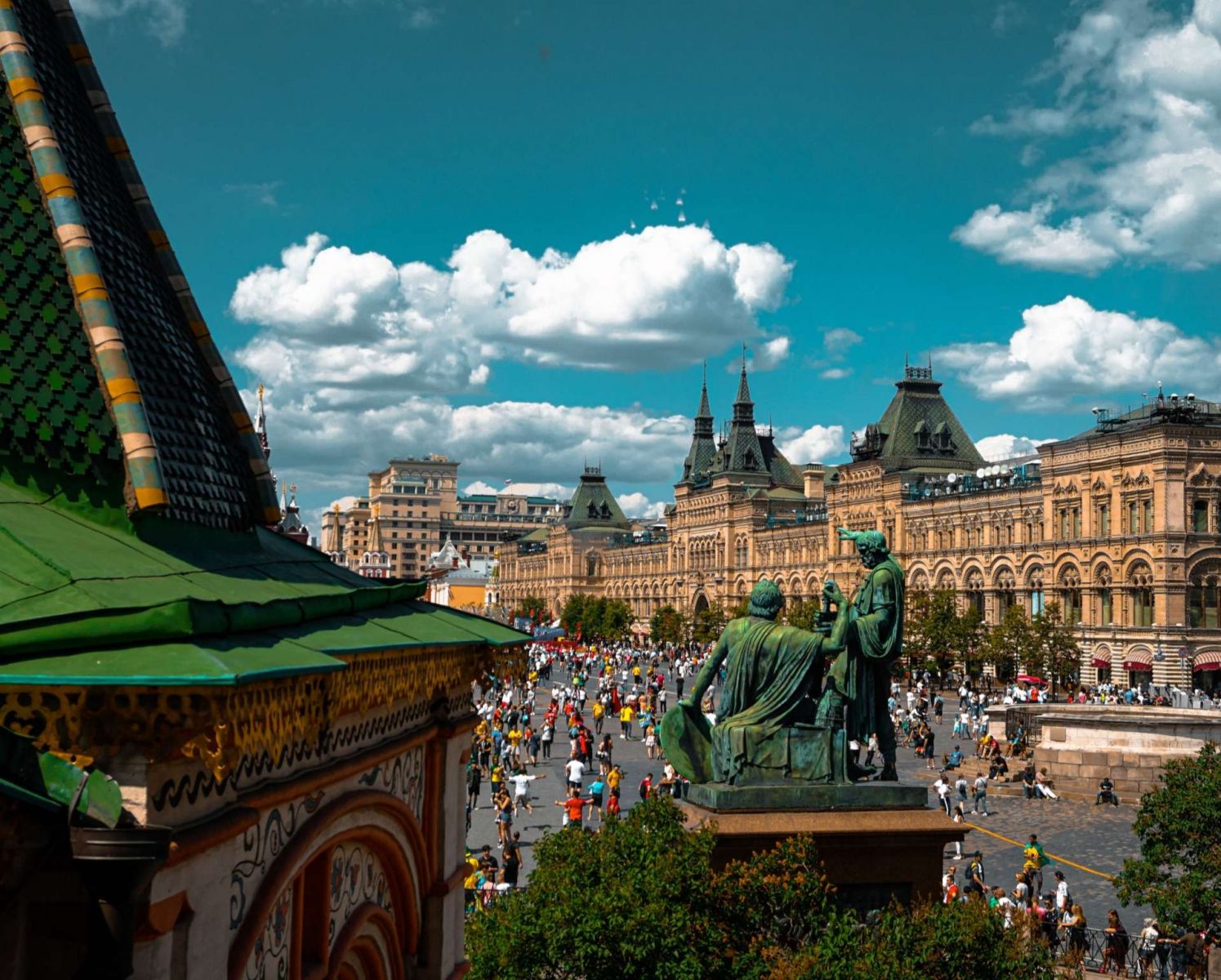
- Reset filters
Moscow Vacation Packages
Moscow vacations are always a great idea when it comes to traveling in Russia. Plan your trip to Moscow with a leading tour operator for Russia and enjoy the ease and pleasure that comes from it. You will stay at the centrally-located hotels, enjoy guided tours to Moscow's best sights with charming local guides, and, most importantly, feel relaxed and immersed in the Russian culture at all times. Wondering what the ideal way to see the best of Moscow is? Well, with a private tour to Moscow, of course! We will listen to your travel preferences and prepare a custom Moscow itinerary just for you. Let's start talking about your upcoming vacation to the gorgeous capital city of Russia.
Moscow Tour Highlights
Explore the capital of the largest country in the world, Russia.
Learn about the most visited sights in Moscow that are worth adding to your Russian itinerary. Create a fantastic tour to Moscow with a destination, choosing your wished activities.
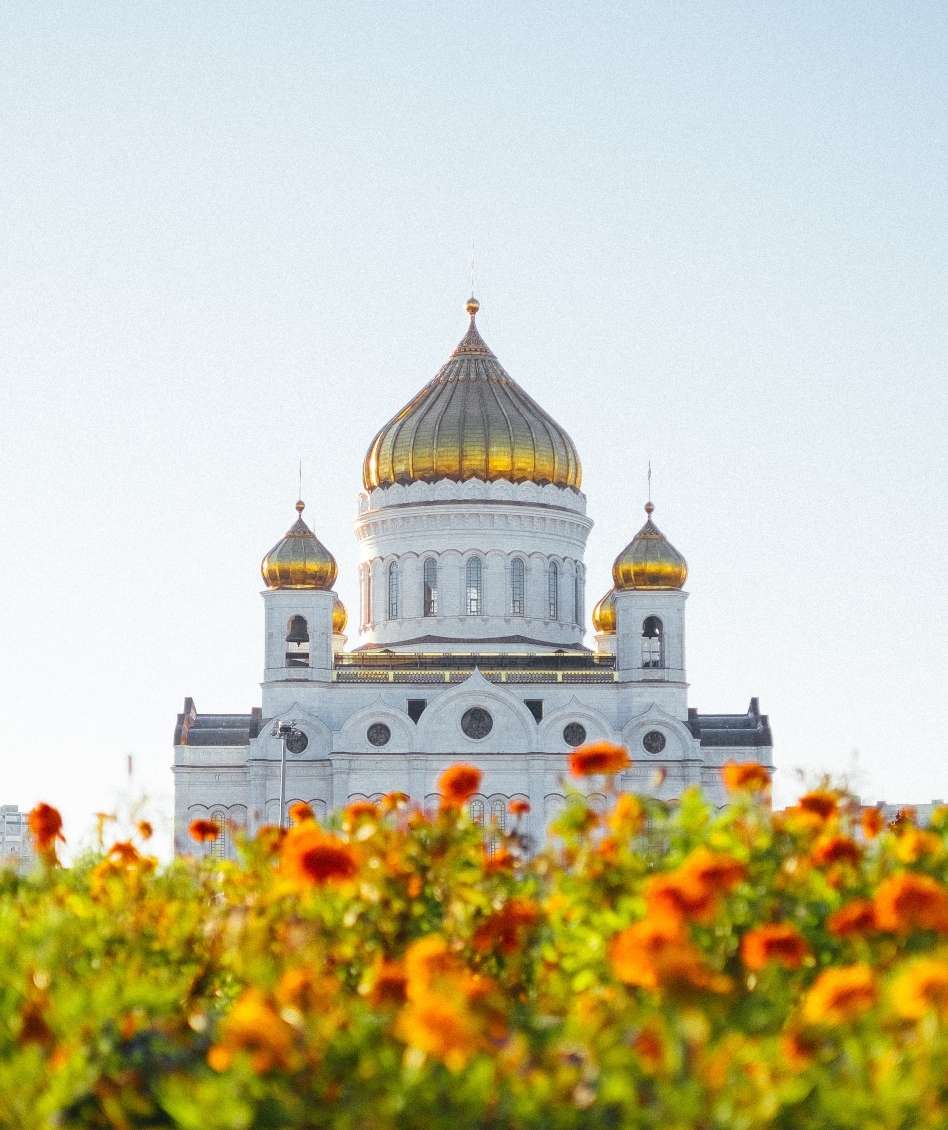
- Moscow walking tour
- The Red Square
- St Basil's Cathedral
- Moscow Subway ride
- Tretyakov Gallery
- The Red Square in Moscow
- The Bolshoi Theater
- Cathedral of Christ the Savior
- Moscow's Kremlin exploration
- 'Seven Sisters' Skyscrapers
Tips for Moscow Travel
Take a look at the good-to-know tips before visiting Moscow and have a fantastic time in the capital.

What to pack
Make sure to check the weather prognosis before your trip and pack accordingly.
When to travel
Moscow is beautiful all around the year. Choose traveling time according to preferred activities.
We suggest to always have some cash with you. You will need Rubles (RUB) for Russia.
How much to tip
Tipping is not required in Russia, but it's considered good etiquette, tip 10%-15% of your bill.
The average summer temperature is approx 18°C (64°F), and winter is around -6°C (22°F).
Some of the most popular souvenirs from Moscow are caviar, Krasnaya Moska perfume.
Best Moscow Sights
One of the highest points in Moscow and one of its most breathtaking places - the Sparrow Hills.
See the 344-feet Cathedral of Christ the Savior - the tallest Orthodox church in the world.
Enjoy masterpieces of Russian opera and ballet in Moscow's legendary Bolshoi Theater.
Being the most recognizable symbol of Russia in the world, Red Square is an absolute must see when in Moscow.
The famous GUM is a large department store in the Kitai-gorod part of Moscow facing Red Square.
History and luxury is revealed inside the Kremlin as the Armoury Chamber displays treasures like Faberge Eggs.
St. Basil’s Cathedral is Moscow’s most famous artistic work of architecture set in the romantic Red Square.
The symbol of Moscow and entire Russia, the Kremlin is often described as the 8th Wonder of the World.
Moscow Metro is like a whole underground city that holds the world's largest collection of Stalinist Art.
I am very satisfied.
I have been using the Firebirds (Travel All Russia) services for a while. I am very satisfied.
WOW. From the choice of hotels to...
WOW. From the choice of hotels, an itinerary that ran to plan, the amazing Guides and drivers, and of course the stunning cities of Moscow and St Petersburg. No long queues for entry to museums, churches, and palaces. I would gladly recommend using Firebird Tours (Travel All Russia) to anyone.
THANK YOU for making this happen for me !!!
I must say from the day I started to book my tip till the day I got home I had one GREAT trip and experience I always felt safe and cared for help was seconds away not that I needed any I will defiantly highly recommend your company to any traveler to Russia WELL DONE to the Whole team THANK YOU for making this happen for me !!!
We enjoyed the whole trip a lot
Overall we enjoyed the whole trip a lot. Moscow is beautiful and clean. Thank you very much for your patience and excellent organization of this tour. Everything ran very smoothly and according to schedule. The guides met us on time at hotels or at our train carriage on arrival. They all spoke good English, had a good local knowledge and were very kind and helpful.
The tour lived up to all expectations
I’m most pleased with Travel All Russia in arranging our ‘Volga Dream’ Russia tour, I would recommend using your services again as every aspect of our tour went off without a hitch. The communication between our tour representative was excellent as we required additional days on both ends of our tour. The visa process and the logistics were flawlessly implemented.
We had a great time in Moscow!
Everything was perfect and we are very satisfied with services and accommodations.
Loved my time in Russia
The trip was great. Especially want to mention the guides I had on the extra days were exceptional. Both guides and drivers worked out well. Thanks again for all your help and attention. Loved my time in Russia, and still haven’t stopped talking about it.
Exploring Magnificent Russian Capitals, June 2017
Just want to say that our guide in St Petersburg was really outstanding. You really felt like someone was looking after you. Very observant - knowledgeable. We really enjoyed time spent with her.
Exploring Vibrant Moscow, June 2017
The experience was great!!! We had an excellent guide. The hotel was fabulous.
Thank you for your help !!! was an unforgettable trip.
Related destinations
More about moscow.
- Call us now
- Request a call
- Chat on WhatsApp
- Start Live chat
- Contact via email

Moscow & St. Petersburg Small Group Tours Private Tour Packages Trans-Siberian Trips Russian River Cruises Moscow Tour Packages St. Petersburg Tours All Russia Tours
Why Travel to Russia Best Time to Visit Russia Russian Visa Information Tips Before Traveling Tips on Arrival Russian Currency Moscow Travel Guide Read More in Our Blog
Hermitage Museum Church of the Savior on Blood The Kremlin Sergiev Posad, Golden Ring Kizhi Island The Red Square Siberia Lake Baikal
Fla. Seller of Travel Ref. No. ST39939 All Rights Reserved © 2024 About Us | Testimonials | Our Blog | Terms of Service | Privacy Policy
- ALL MOSCOW TOURS
- Getting Russian Visa
- Top 10 Reasons To Go
- Things To Do In Moscow
- Sheremetyevo Airport
- Domodedovo Airport
- Vnukovo Airport
- Airports Transfer
- Layover in Moscow
- Best Moscow Hotels
- Best Moscow Hostels
- Art in Moscow
- Moscow Theatres
- Moscow Parks
- Free Attractions
- Walking Routes
- Sports in Moscow
- Shopping in Moscow
- The Moscow Metro
- Moscow Public Transport
- Taxi in Moscow
- Driving in Moscow
- Moscow Maps & Traffic
- Facts about Moscow – City Factsheet
- Expat Communities
- Groceries in Moscow
- Healthcare in Moscow
- Blogs about Moscow
- Flat Rentals
We do amazing tours in Moscow for amazing people from all over the world
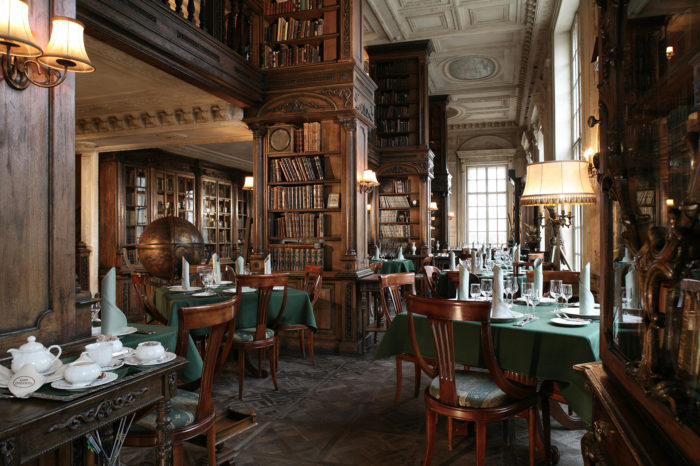
Gastronomic Moscow Private Tour
Savour some of the finest foods Moscow has to offer: from exquisite cuisine to Russian fast food, from products of local farmers to the restaurant included in the international rating of The World's 50 Best …
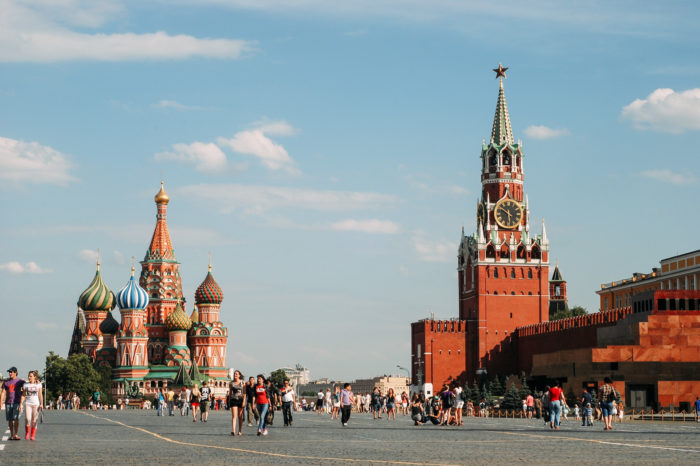
All-in-One Moscow Essential Private Tour
If you are in Russia for the first time but do not enjoy visiting crowded ordinary touristic paths, then All-In-One Moscow Walking Tour was created for you! It’ll let you see all of the most …
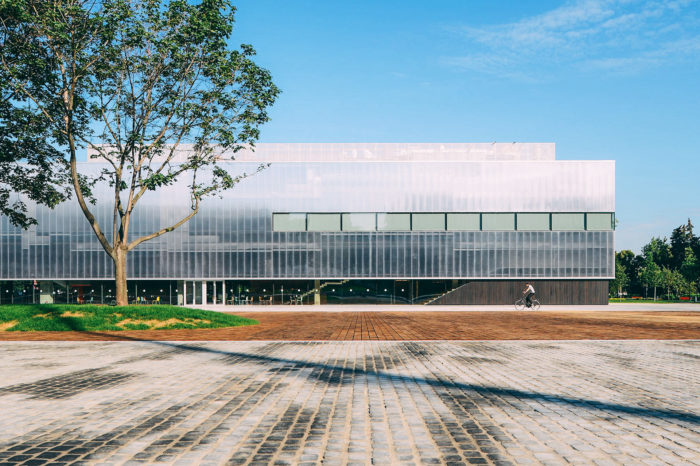
Moscow Art & Design Private Tour
Try the taste of Russian classic and contemporary visual art! This tour was specifically created to show major masterpieces of Russian art under the guidance of a passionate and knowledgable local art expert. It includes …
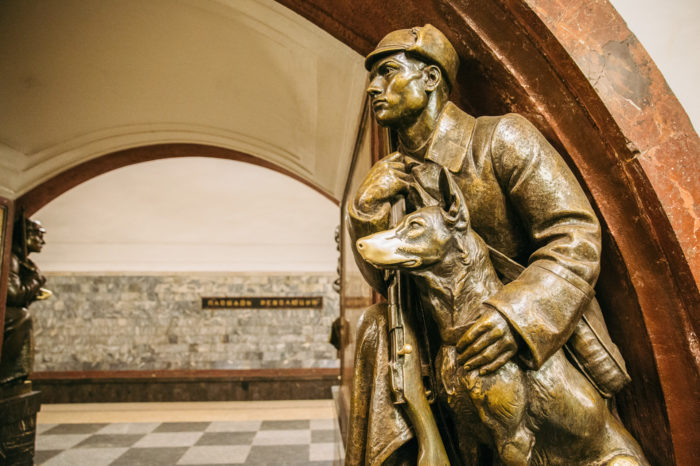
Moscow Metro & Stalin Skyscrapers Private Tour
The beauty of Moscow’s underground is well known all over the world – made from the marble and granite each station is the grandiose monument itself, not only the member of the largest in the …
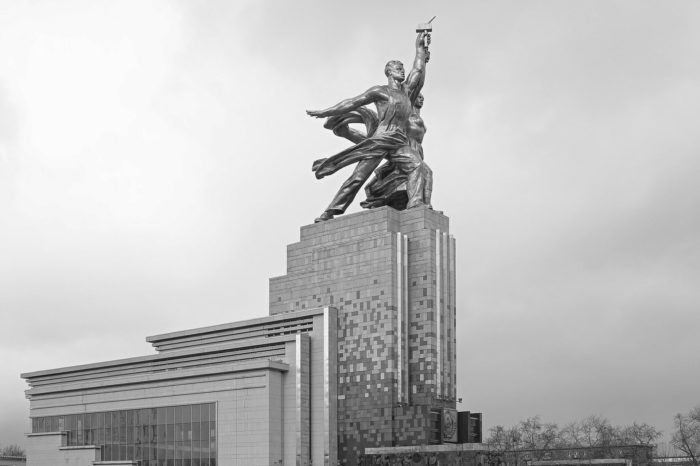
Soviet Moscow Historical & Heritage Private Tour
The unique opportunity to look through the pages of the USSR Moscow history that are as breathtaking as terrifying is to enjoy Soviet Moscow tour. During more than 6 hours a tourist visits the majority …
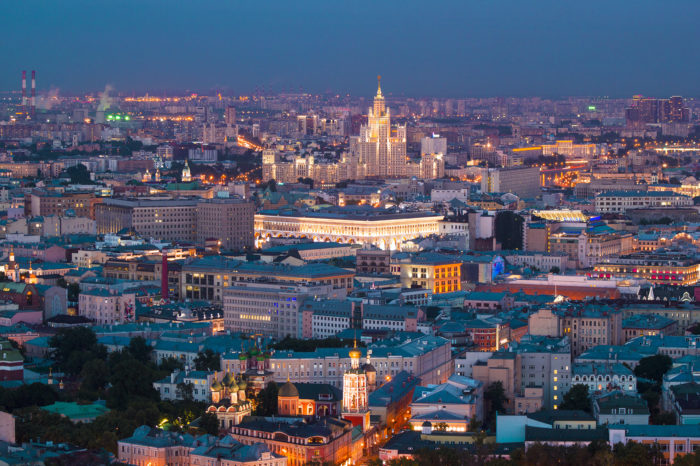
Layover in Moscow Tailor-Made Private Tour
This tour was created for those who want to see the city during the layover in one of Moscow airports. Depending on how much time you have, we will choose an ideal program for you …
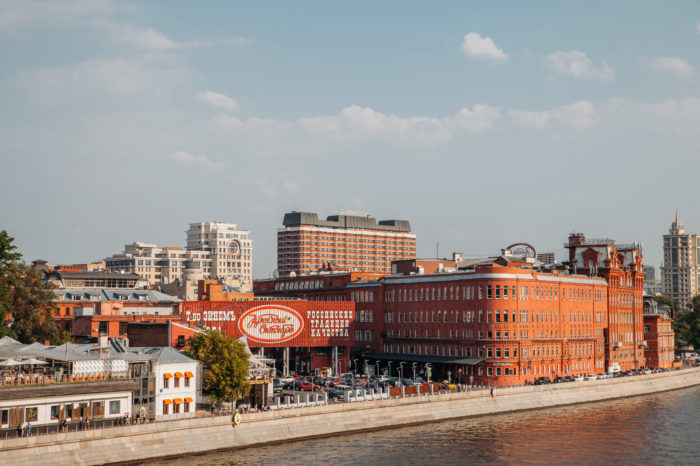
«Day Two» Moscow Private Tour
If you’ve seen all touristy places in Moscow already, it’s time to go a bit further: walk in charming quiet neighborhoods of Moscow, have a snack in one of the best patios with a view …
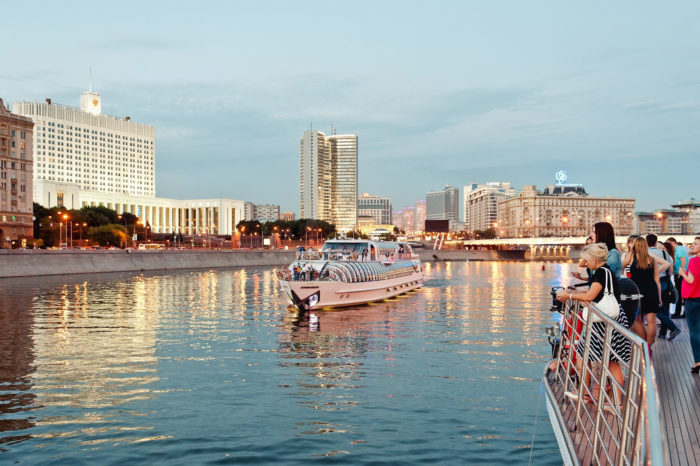
Whole Day in Moscow Private Tour
If you have a whole day you can devote to exploring Moscow, this is the perfect tour for you! Explore the key sightseeing spots of Moscow city center and visit off-the-beaten path places in Moscow …
Market Leaders
Our site is a number one Moscow city guide for travelers with more than 50 000 readers.
Modern Service
We are a team of young Muscovites who adore Moscow and love what they do.
9 Years With You
We do our job since 2012 and we know our beloved city better than anyone else.
Tour Guide Jobs →
Every year we host more and more private tours in English, Russian and other languages for travelers from all over the world. They need best service, amazing stories and deep history knowledge. If you want to become our guide, please write us.
Contact Info
+7 495 166-72-69
119019 Moscow, Russia, Filippovskiy per. 7, 1
Mon - Sun 10.00 - 18.00

IMAGES
COMMENTS
Dark Tourism also known as black tourism or grief tourism is tourism that is associated with death or tragedy. Some popular dark tourism sites are: Concentration Camps (Auschwitz, Dachau) Sites of Nuclear Disasters (Chernobyl, Fukushima) Memorial Sites (Ground zero NYC, Hiroshima Peace Memorial) Cemeteries and Crypts. Dungeons and Prisons.
This is a comprehensive guide to travel to 'dark-tourism' destinations worldwide. Covering over a thousand individual dark places in 116 different countries. This site aims to promote (and also "rehabilitate") dark tourism (DT). There has been some negative reporting in the media about DT, often on the basis of an ill understood concept of DT ...
A Traveler's Guide to Dark Tourism. Exploring the World's Dark & Unusual Travel Destinations. Spac Prison: Albania's Dark Tourism Destination Reveals a Haunting History. November 17, 2023 June 26, 2023. Nestled within the picturesque mountains of Albania, SPAÇ Prison stands as a chilling reminder of the country's tumultuous past. Once a ...
170. The Aokigahara forest in Japan, known as the suicide forest, is a dark tourism destination. Ko Sasaki for The New York Times. By Maria Cramer. Oct. 28, 2022. North Korea. East Timor. Nagorno ...
Dark tourism refers to visiting places where "some of the darkest events of human history have unfolded," which can include "genocide, assassination, incarceration, ethnic cleansing, war or ...
1. Chernobyl Exclusion Zone - Kyiv, Ukraine. The abandoned amusement park in Pripyat is one of dark tourism's crowning images. The haunting stills of the fairground that never heard the laughs of children hang in modern consciousness, a symbol of tragic loss and a warning of the mistakes men can make.
Darkest Travel is a media and travel company dedicated to providing content about Dark Tourism and offering vacation stays in eerie locations. In the shadowy realm of travel, a sinister fascination has crept into the hearts of wanderers—an obsession with the macabre, the mysterious, the haunted.
The online Dark-Tourism.com travel guide cautions against such behavior, as well as the ethically questionable "voyeurism" of visiting an ongoing or very recent tragedy to gape.
Dark tourism (also thanatourism, black tourism, morbid tourism, or grief tourism) has been defined as tourism involving travel to places historically associated with death and tragedy. More recently, it was suggested that the concept should also include reasons tourists visit that site, since the site's attributes alone may not make a visitor a ...
Call 0203 983 9653, to speak to a travel consultant. Read More. Read More. Book your Thriller Dark Tourism Holidays for 2023/2024. Discover the history of tragedy and death at unique destinations around the world.
The study projects a promising future for global dark tourism, with the market expected to reach a valuation of $40.82 billion by 2034, growing at a compound annual growth rate (CAGR) of 2.5 percent. In the nearer term, for 2024, the dark tourism market is forecast to be valued at $31.89 billion. One of the primary drivers behind the growth of ...
Dark tourism consists of visiting places or making pilgrimages to areas where the theme of violence and death is the protagonist. This term, also known as thanatourism, was first used in 1996 in Scotland by Lennon and Foley, two students at the University of Glasgow. That same year, marketer and writer A. V. Seaton officially coined the word in ...
10 Pompeii, Italy. Pompeii is perhaps one of the first dark tourism sites to gain popularity, attracting international travelers for over 250 years. The fallen city is one of the best-preserved places to see Ancient Roman architecture, due significantly to the violent eruption of Mount Vesuvius. Volcanic ash blanketed the city, somewhat ...
The origins of dark tourism. Dark tourism refers to travel that involves visiting places associated with death, suffering, grief or disaster. The term was first used in 1996 by two researchers from Glasgow Caledonian University, John Lennon and Malcolm Foley, and was later taken up by Dr Philippe Stone who now works at the Dark Tourism Research ...
The Appeal of Death and Tragedy. The motivations of tourists in visiting dark tourist locations often come down to four common themes, according to a 2021 study published in International Hospitality Review. Curiosity appears to be the biggest factor, but personal connection also matters. Many tourists take part because they feel connected ...
Contributed by Cecilie from Worldwide Walkers. Photo Credit: Cecilie, Worldwide Walkers. Gravensteen Castle in Ghent is a classic example of dark tourism sites in Europe. The castle was built back in 1180 and housed the Count of Flanders for many centuries until it became a court, a prison, and even a cotton factory.
Though this sun-drenched land is certainly rather a prime mainstream holiday country than a dark tourism travel destination, Spain still offers a number of really quite exceptional sites of that category, mostly related to the Spanish Civil War and the Franco dictatorship: - Madrid. - Valle de los Caidos. - Barcelona.
The diversity of this mega-city is astounding. Only a few steps away from the solemn red facade of the Kremlin and the sounds of righteous church bells, a buzzing night scene and alternative-fashion boutiques can be found. Culture: In Moscow only the best goes. Be it a theatre, restaurant or gallery, the standards are certain to be world-class.
Fueled by travel documentaries such as Vice videos and Anthony Bourdain's Parts Unknown, the broader adventure-tourism industry, which includes travel to war zones and political hotspots, has ...
Grand Russia is DMC Travel Agency that offers full range of travel services in the entire country such as visa support letters (tourist invitation letter), transport services - from private vehicles up to 60 pax tourist coaches, professional tour guide assistance, domestic railway and airline tickets, hotel booking services, meals (of any preferences and rare food habits), tailor-made ...
Moscow Vacation Packages. Moscow vacations are always a great idea when it comes to traveling in Russia. Plan your trip to Moscow with a leading tour operator for Russia and enjoy the ease and pleasure that comes from it. You will stay at the centrally-located hotels, enjoy guided tours to Moscow's best sights with charming local guides, and ...
Gastronomic Moscow Private Tour. Savour some of the finest foods Moscow has to offer: from exquisite cuisine to Russian fast food, from products of local farmers to the restaurant included in the international rating of The World's 50 Best …. 1 review. 9 hours. €49 €39.